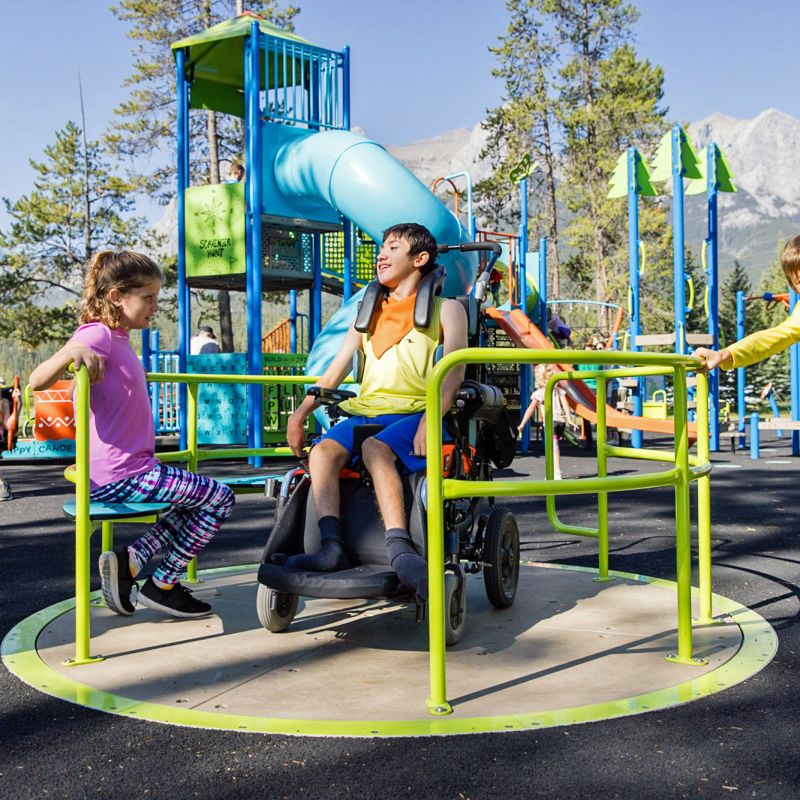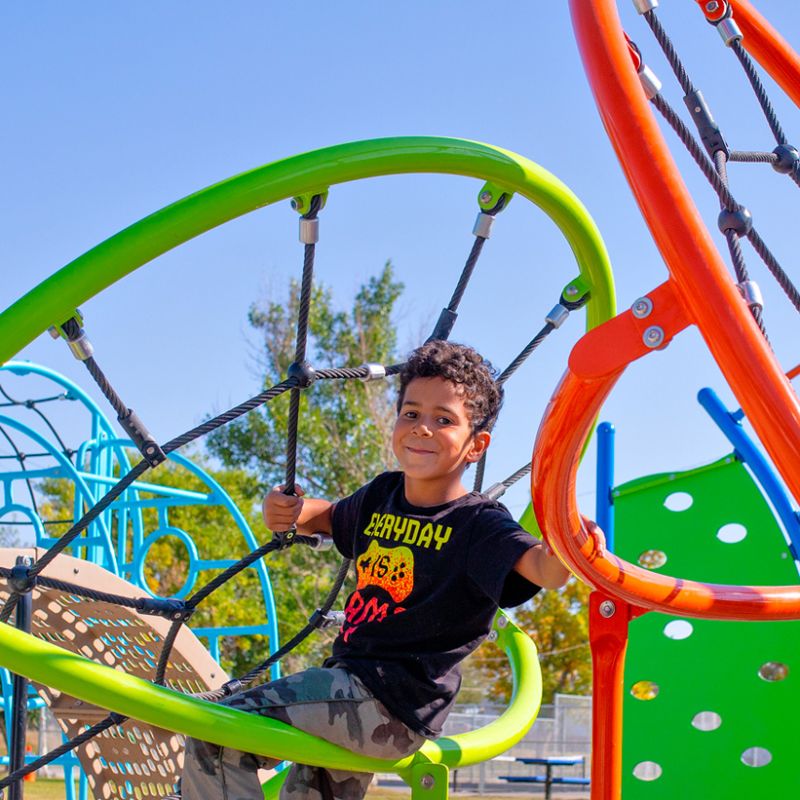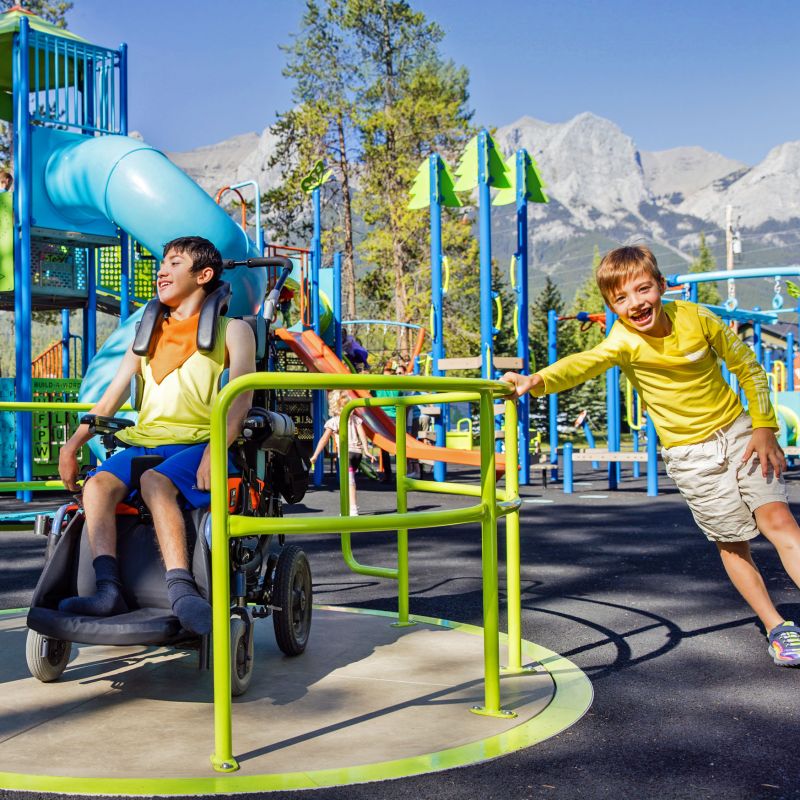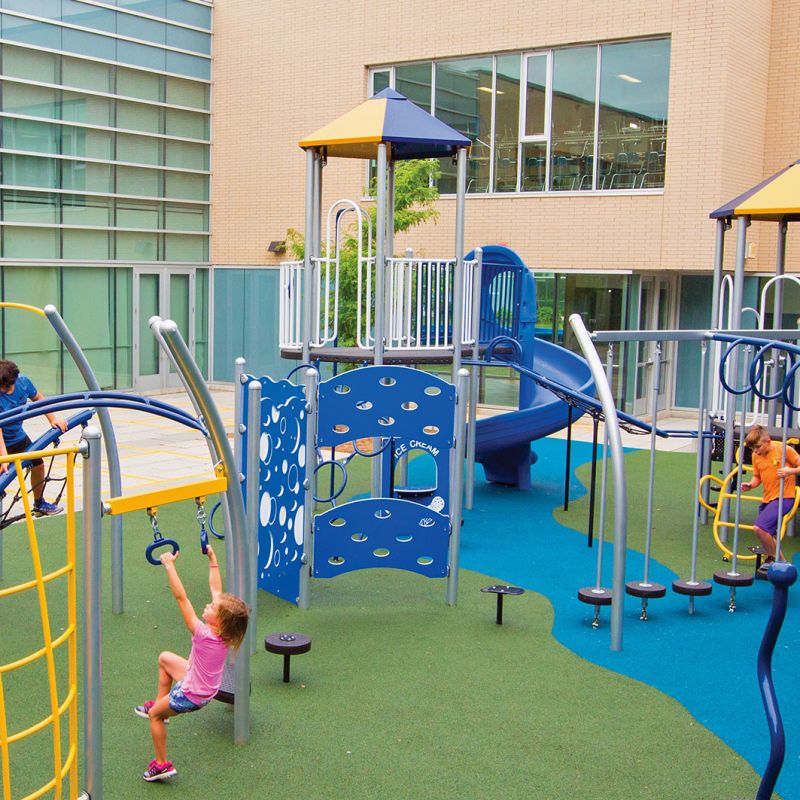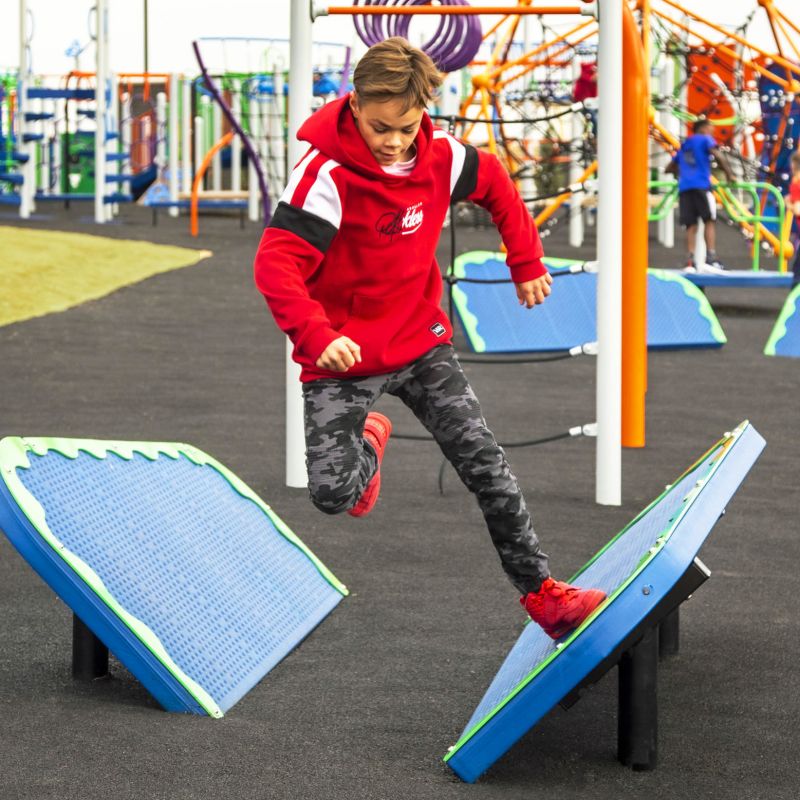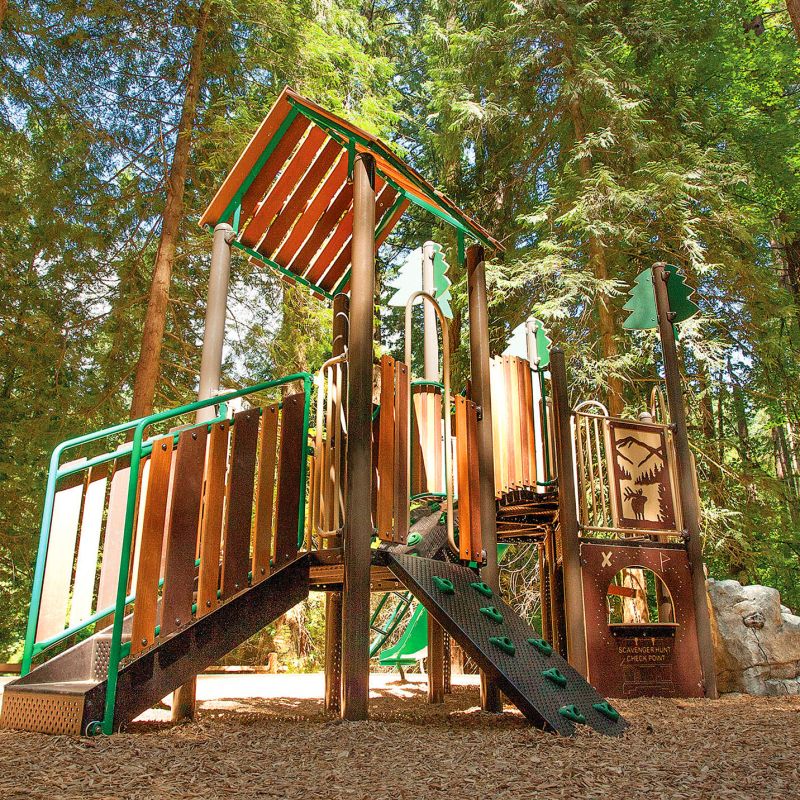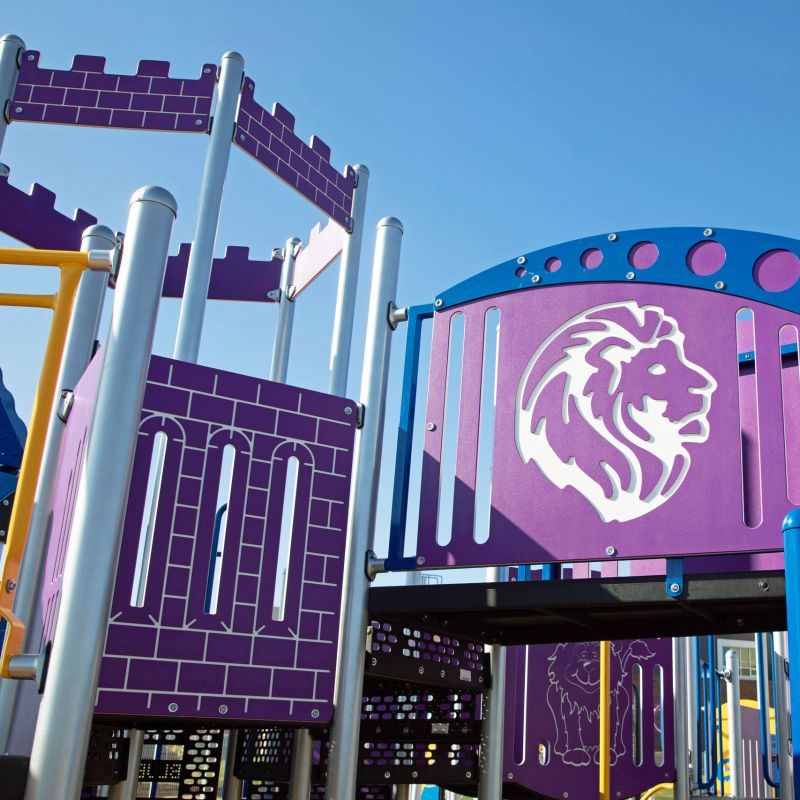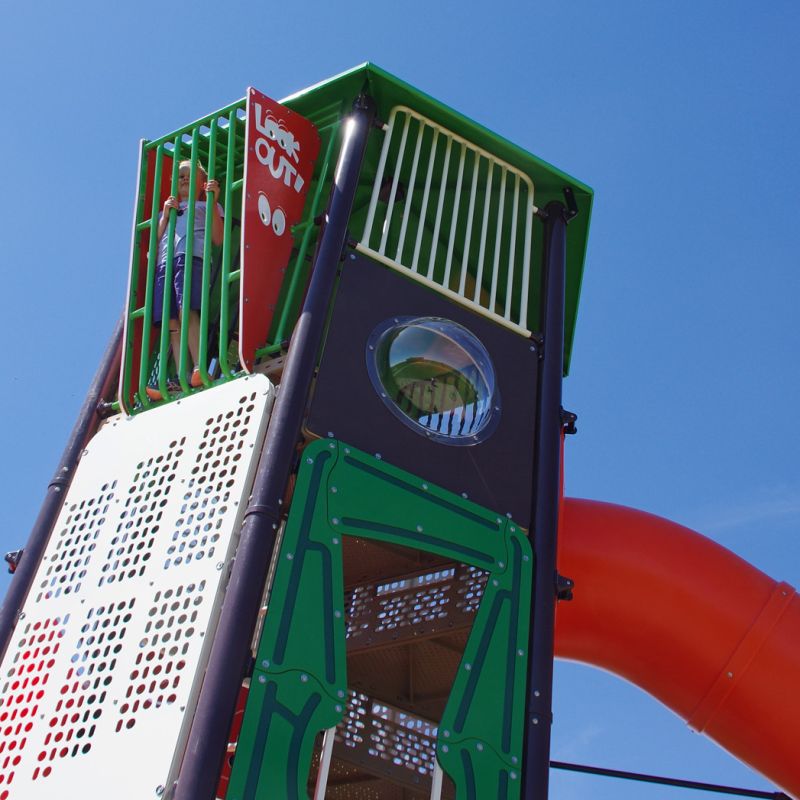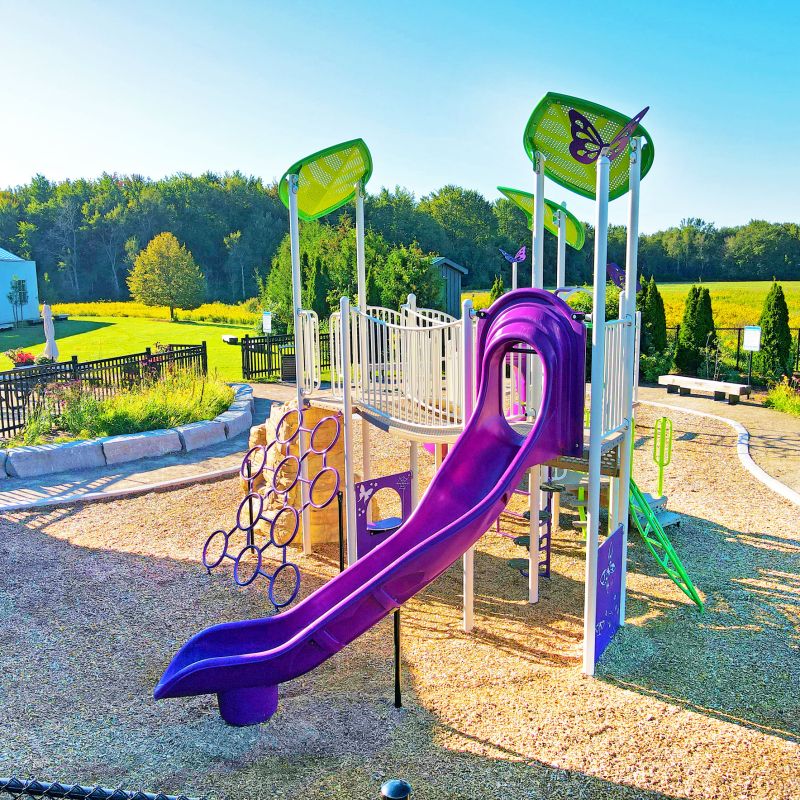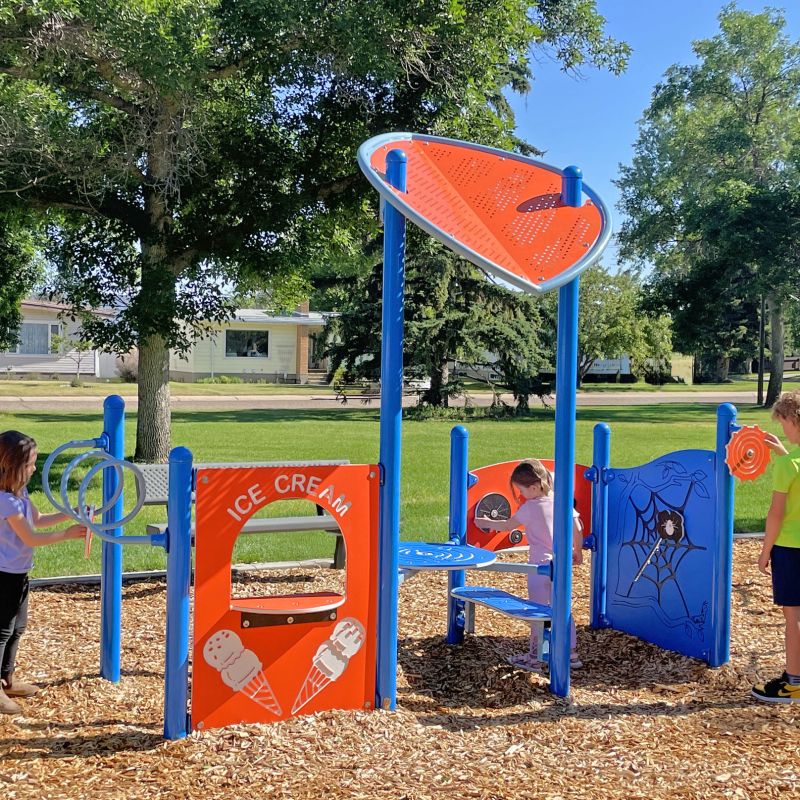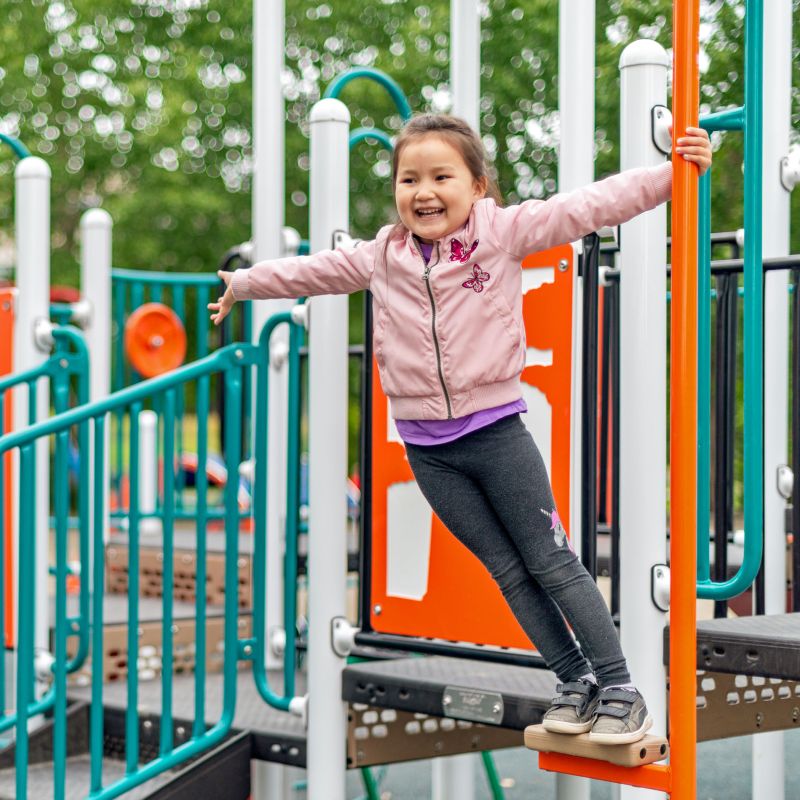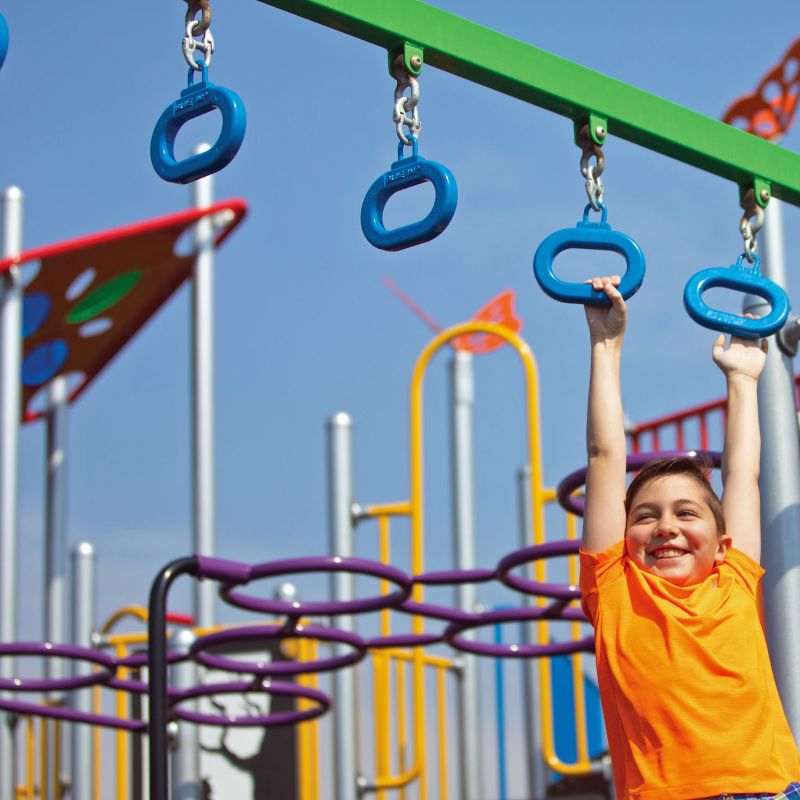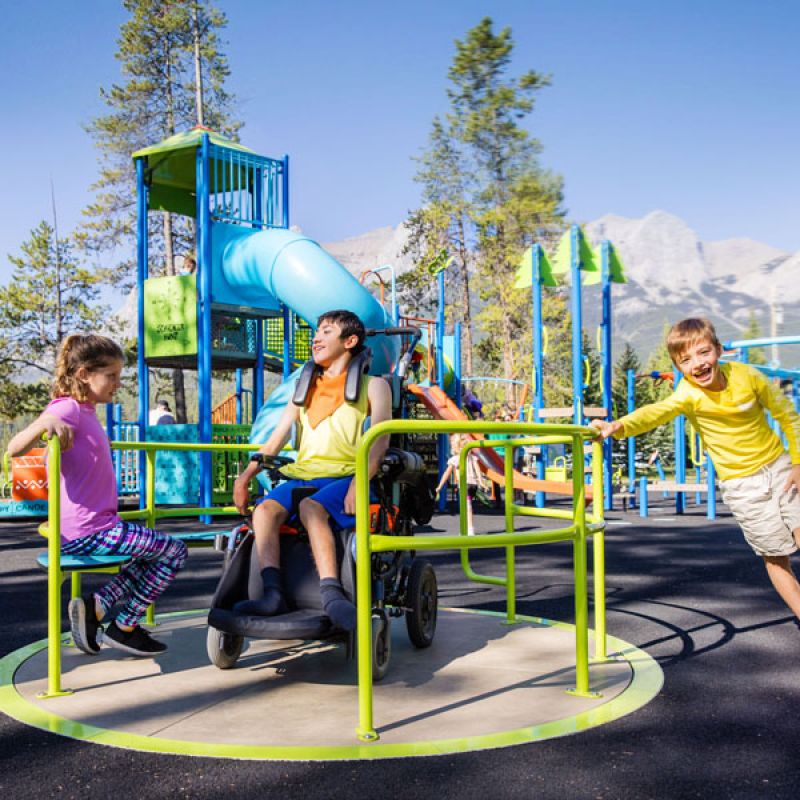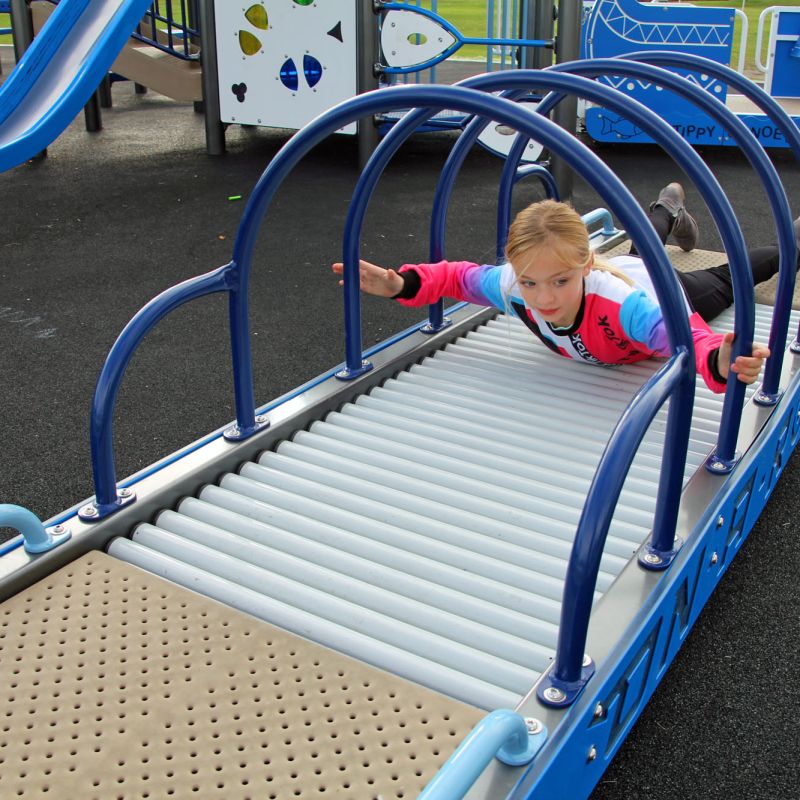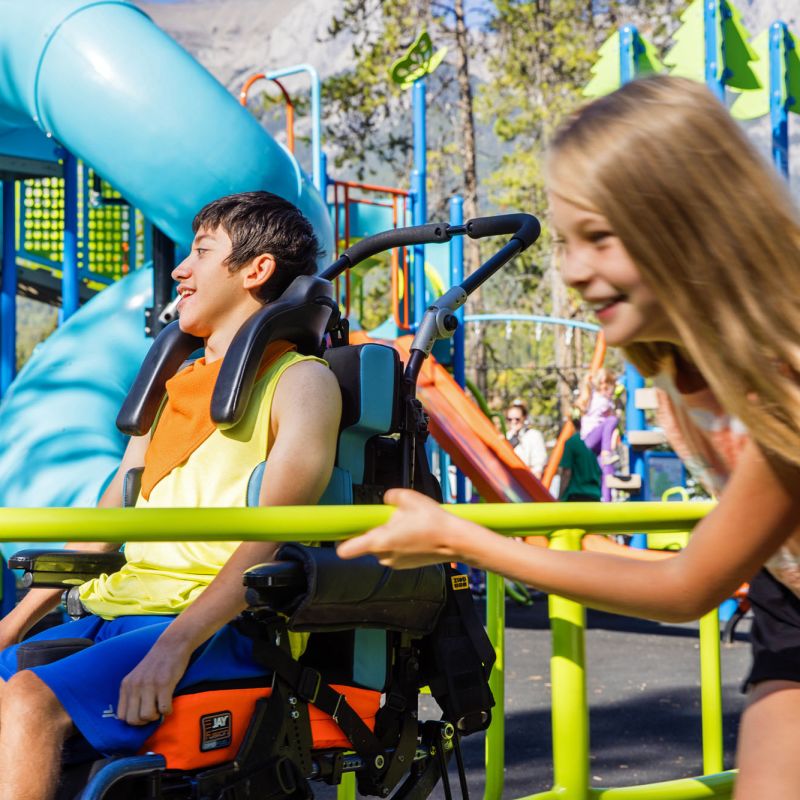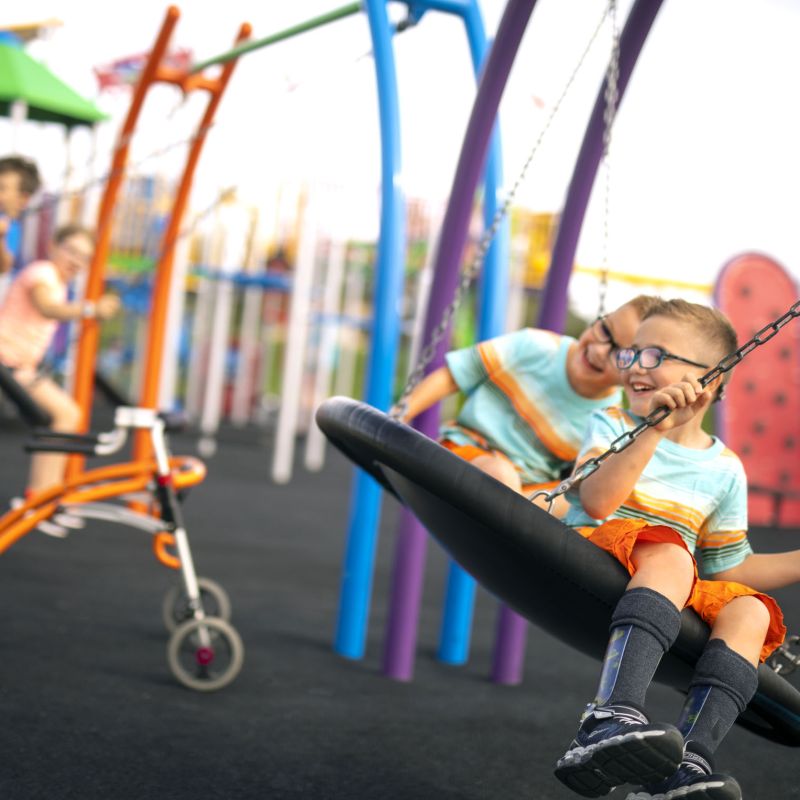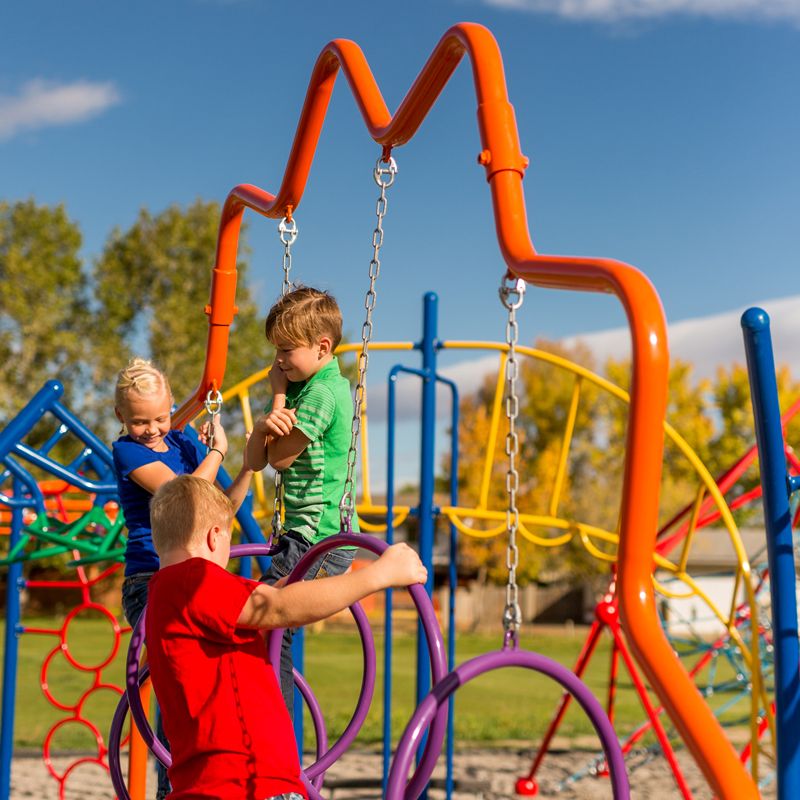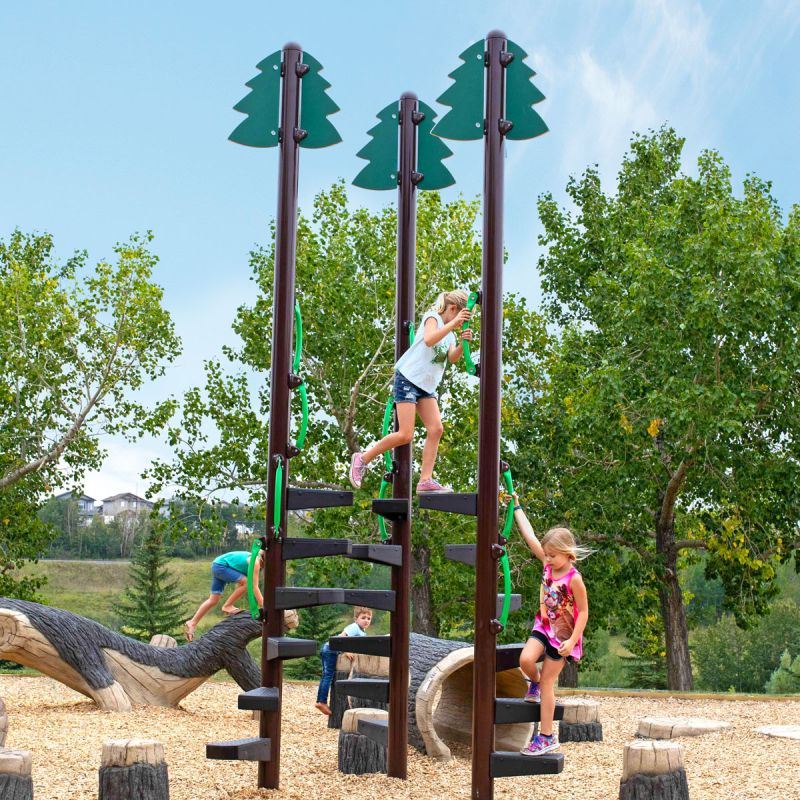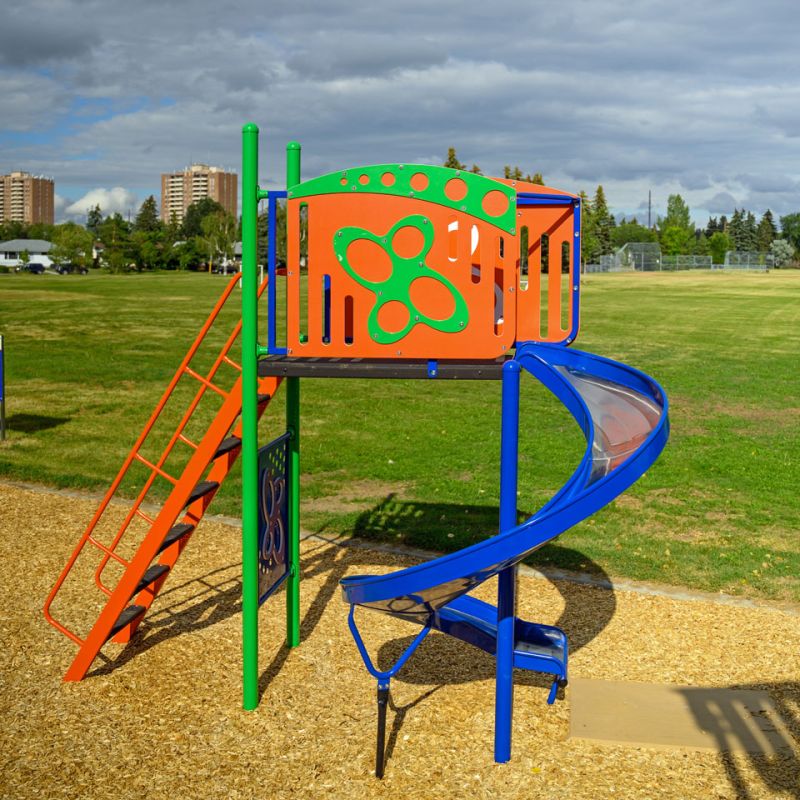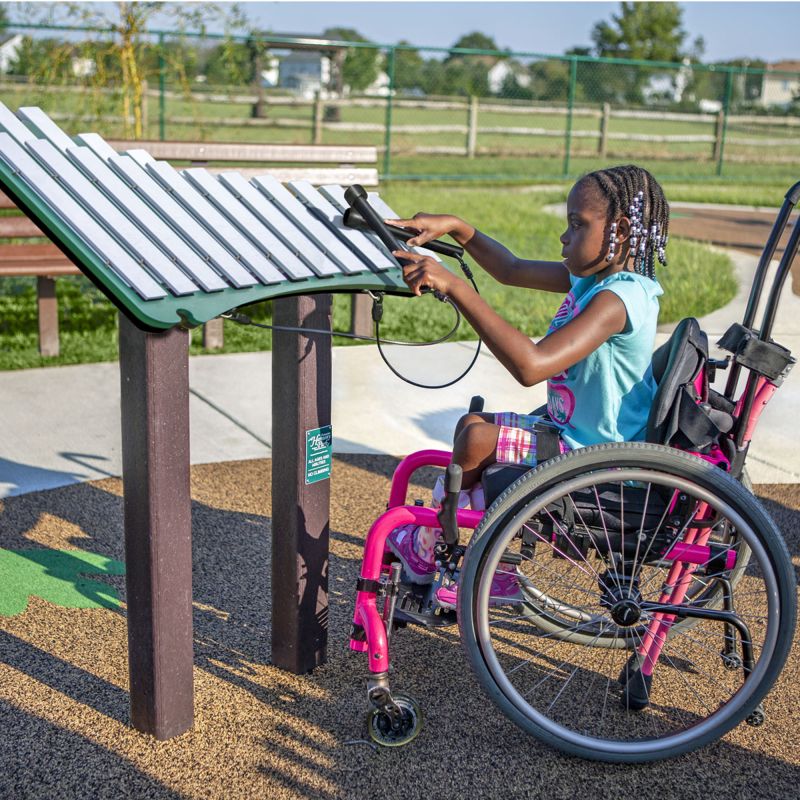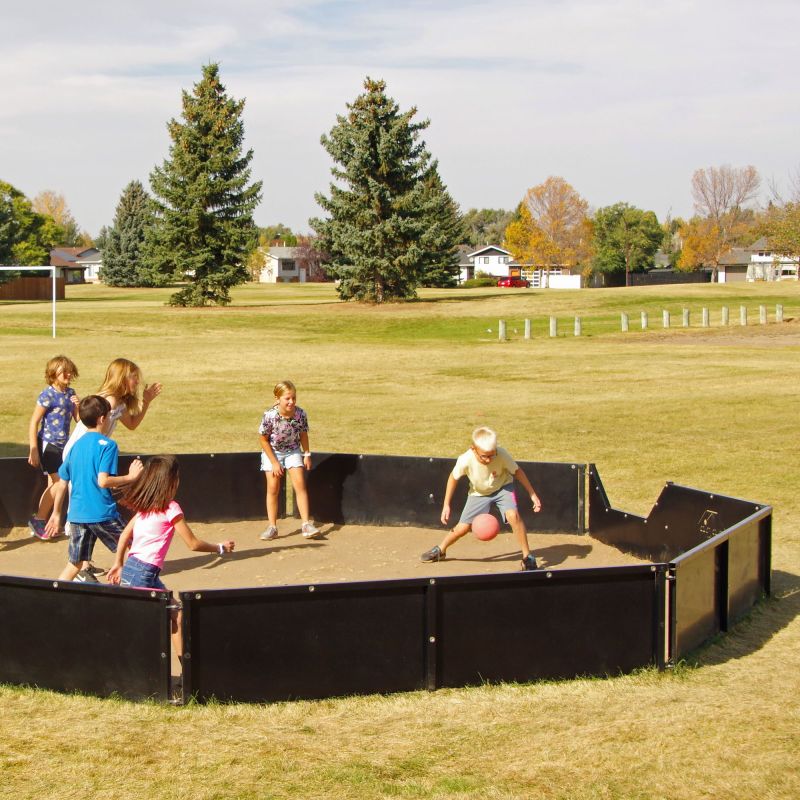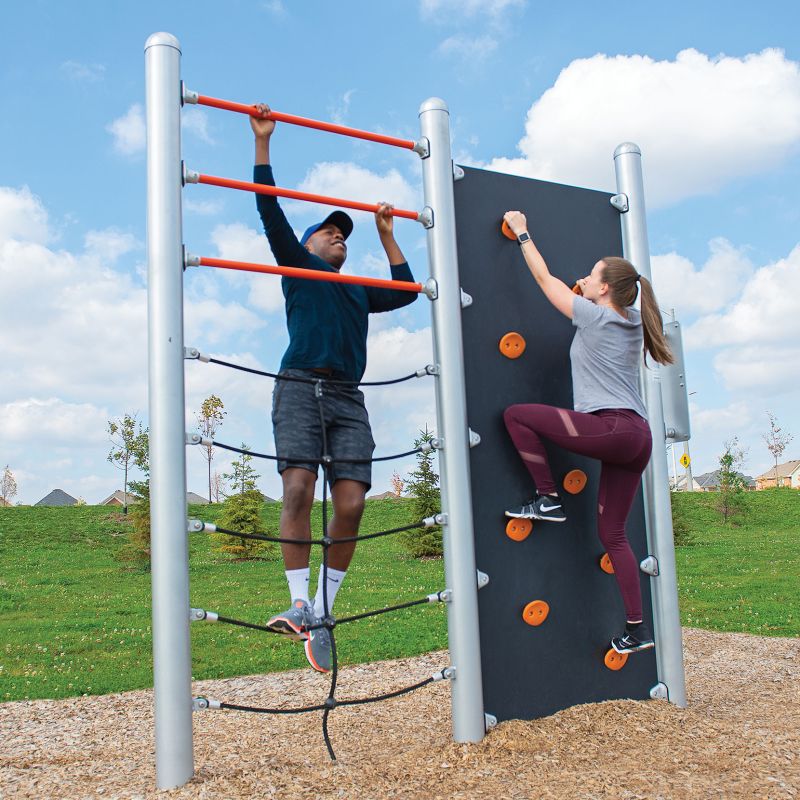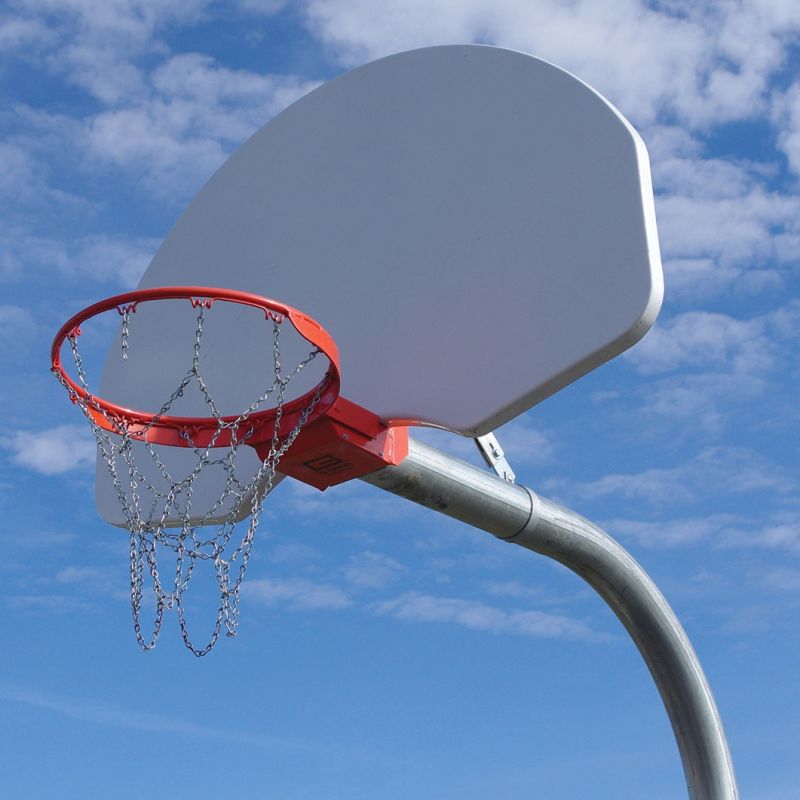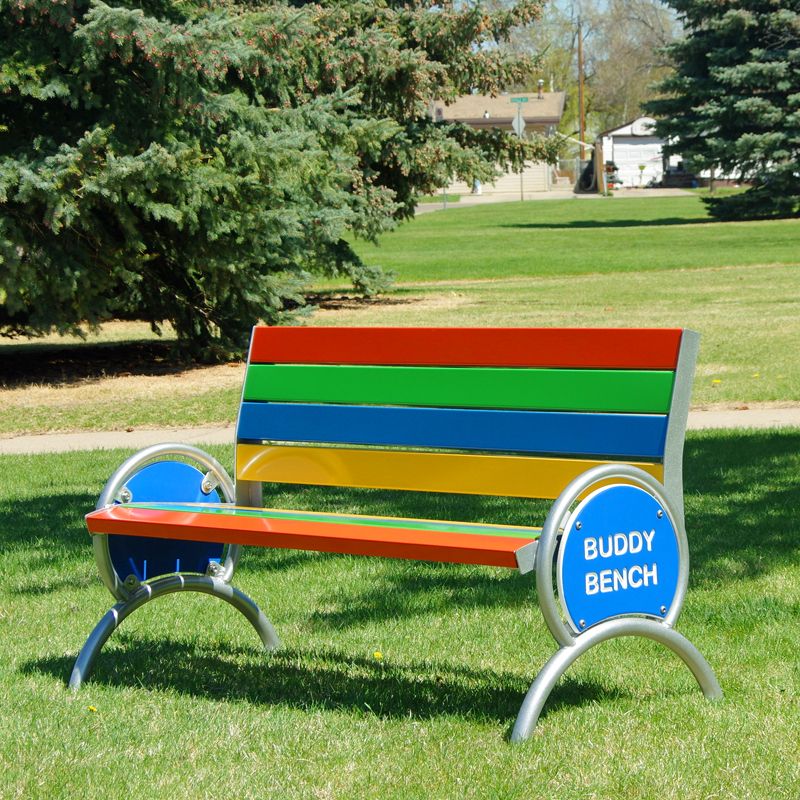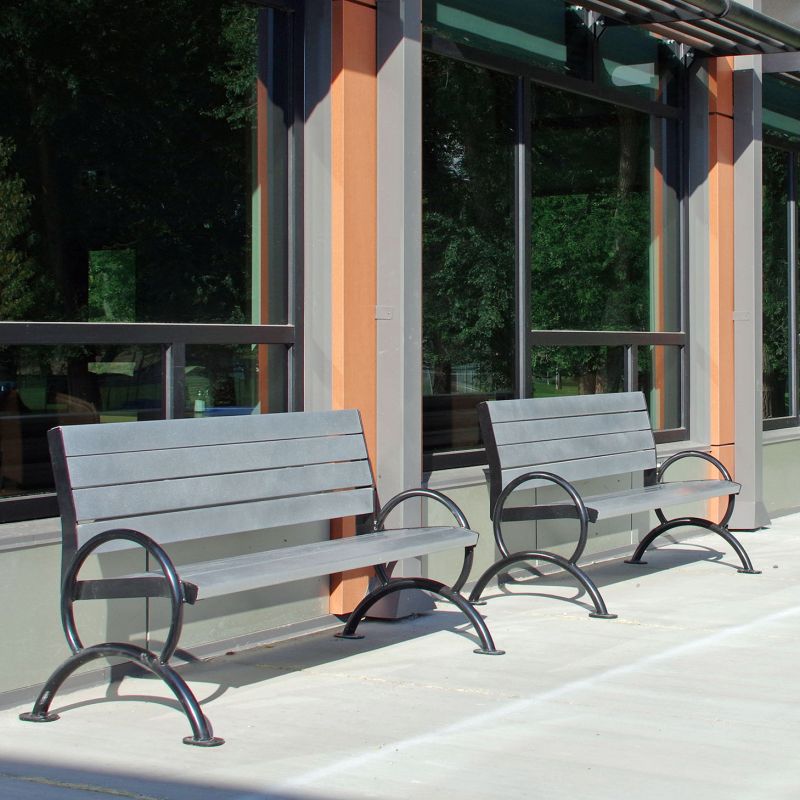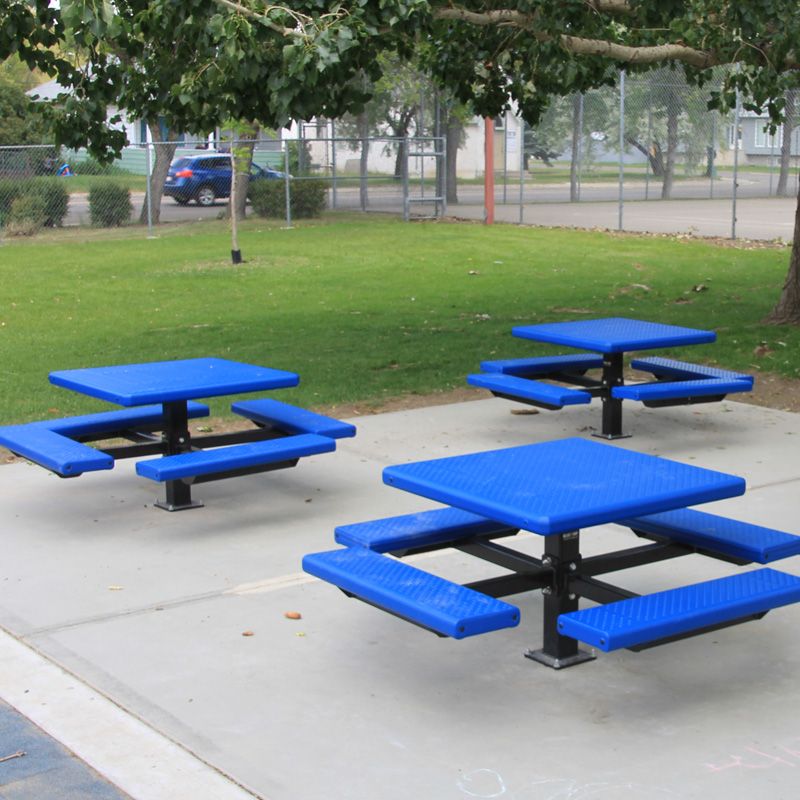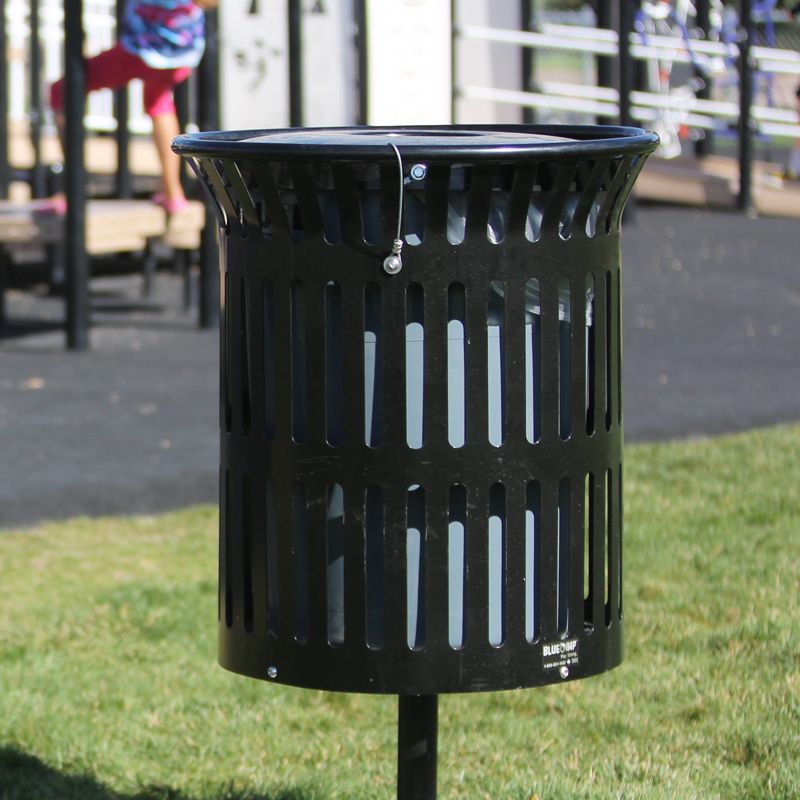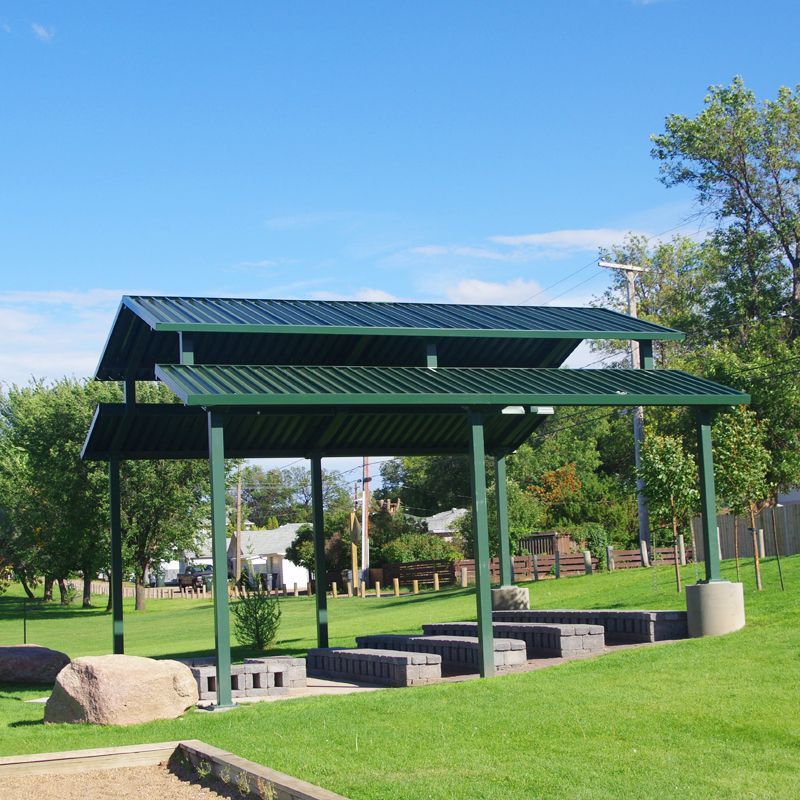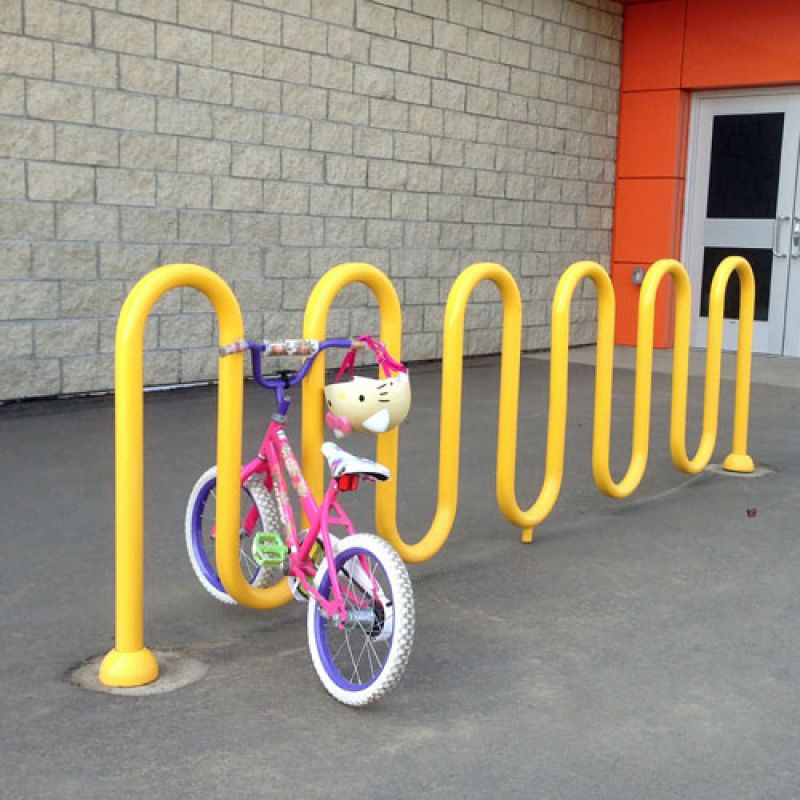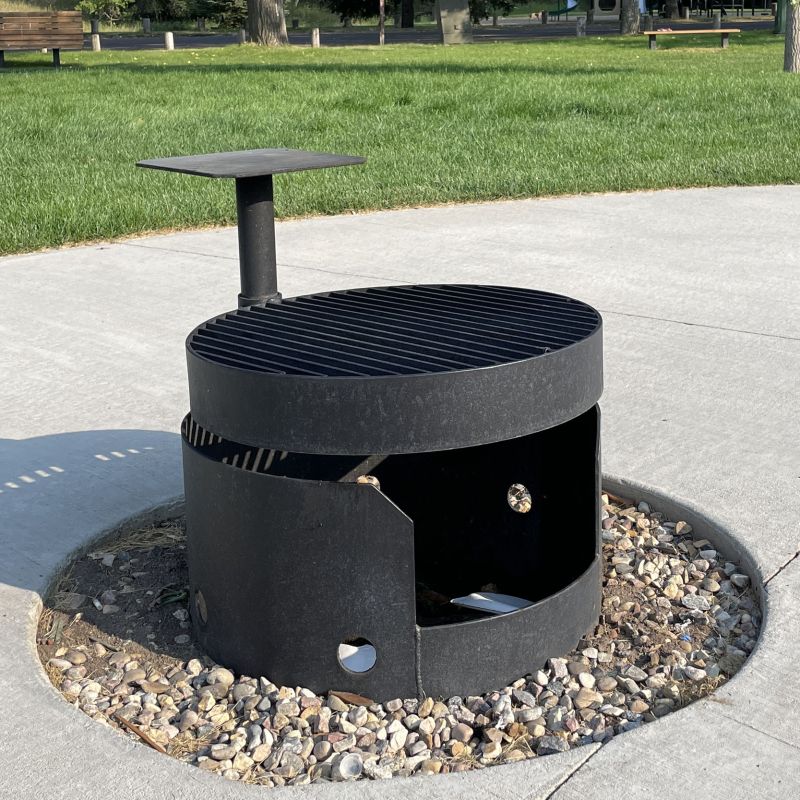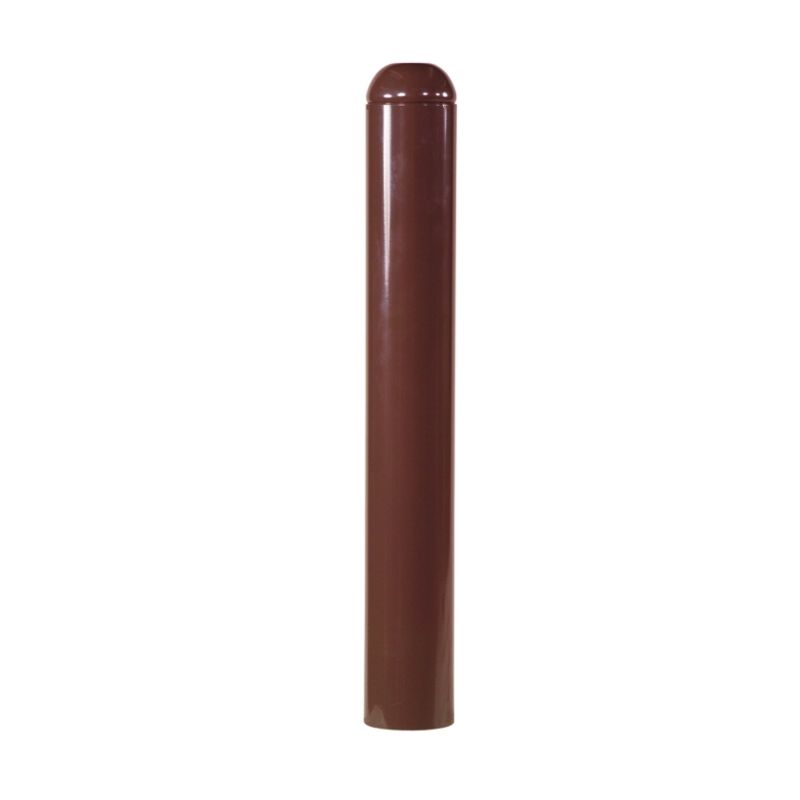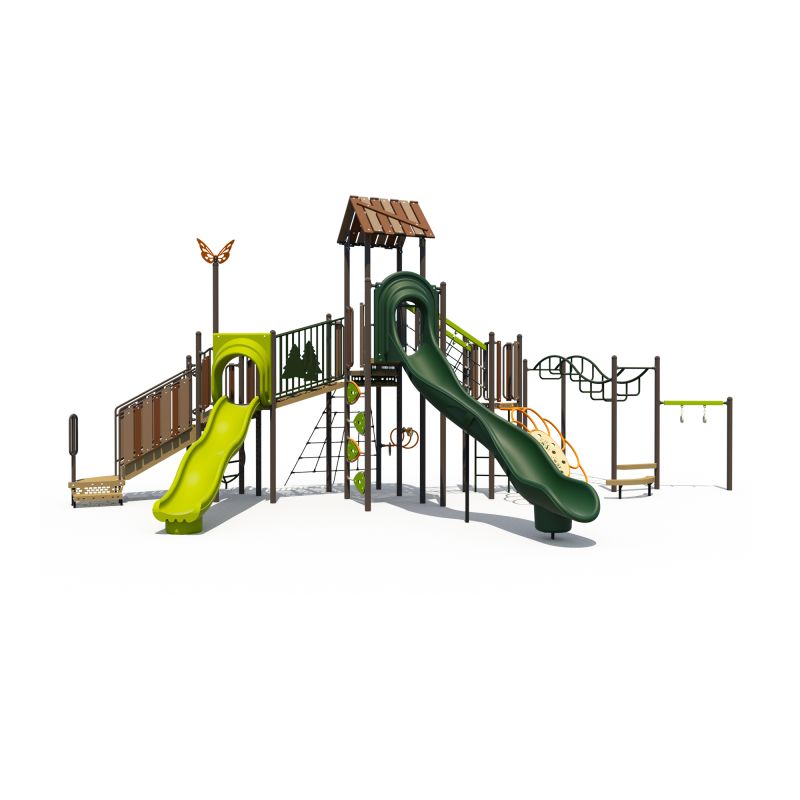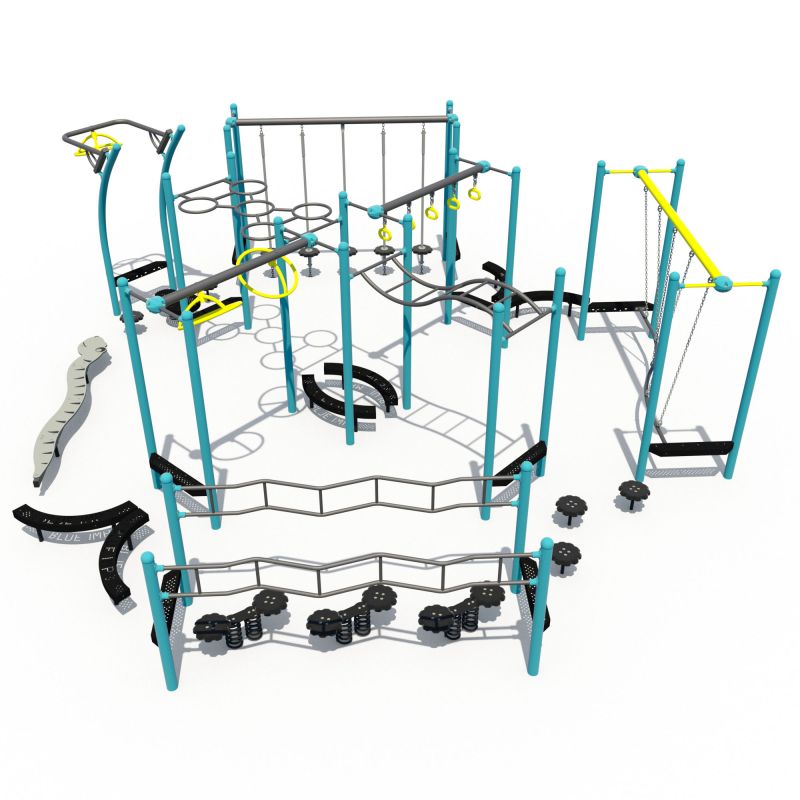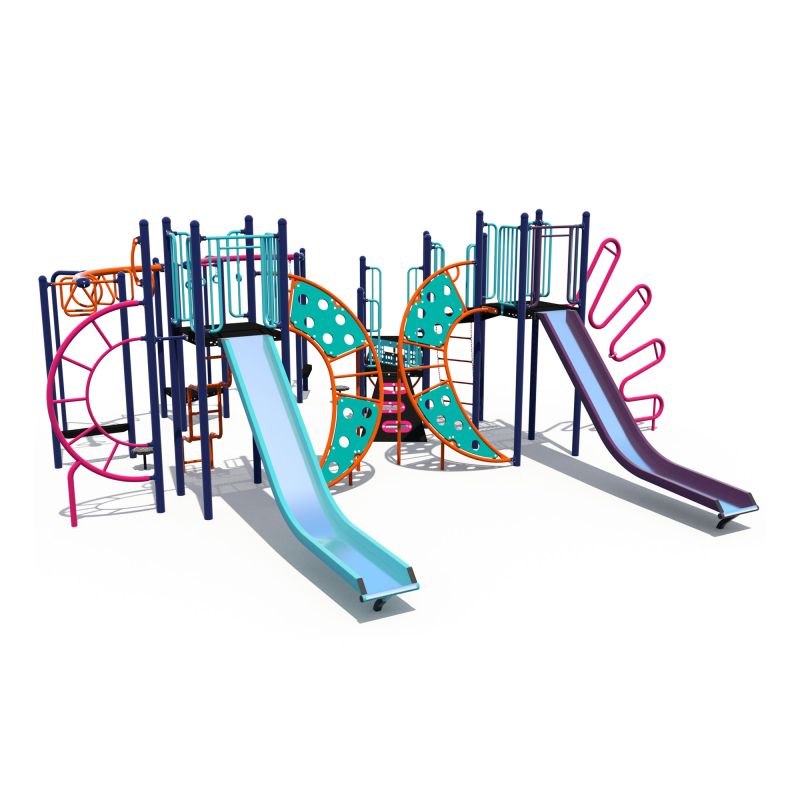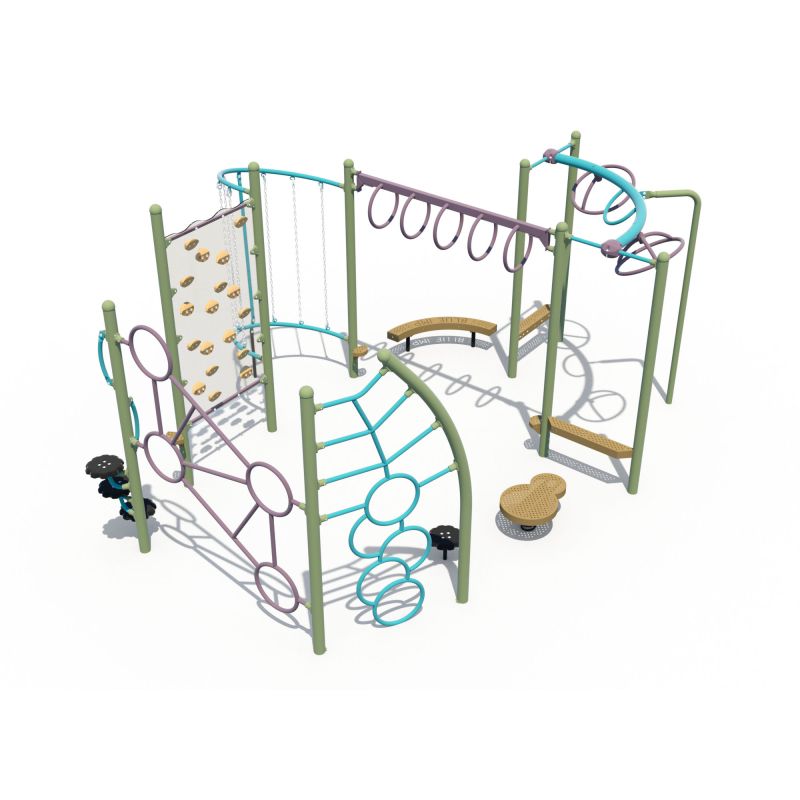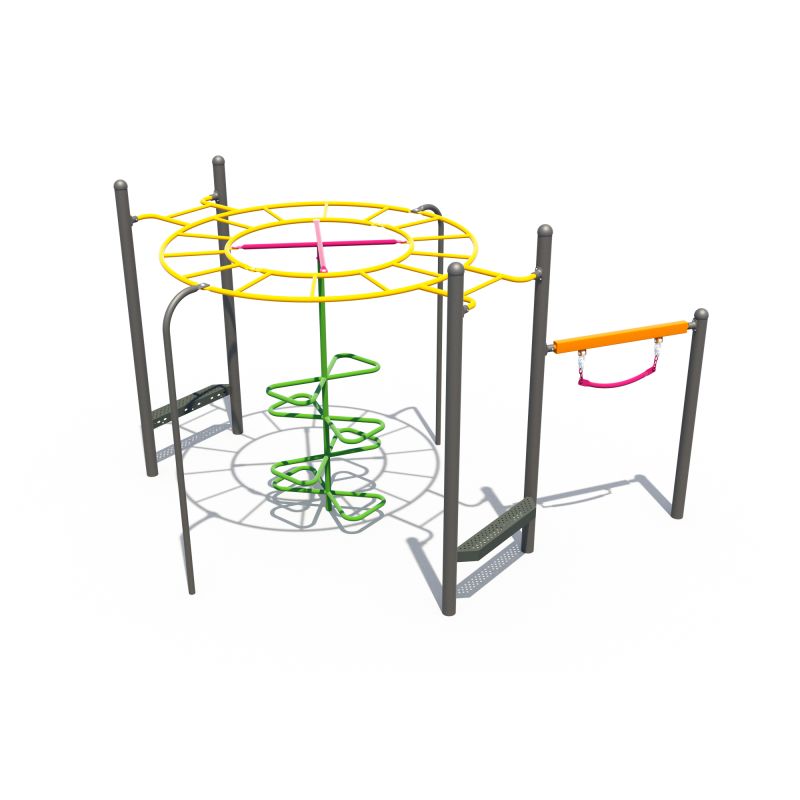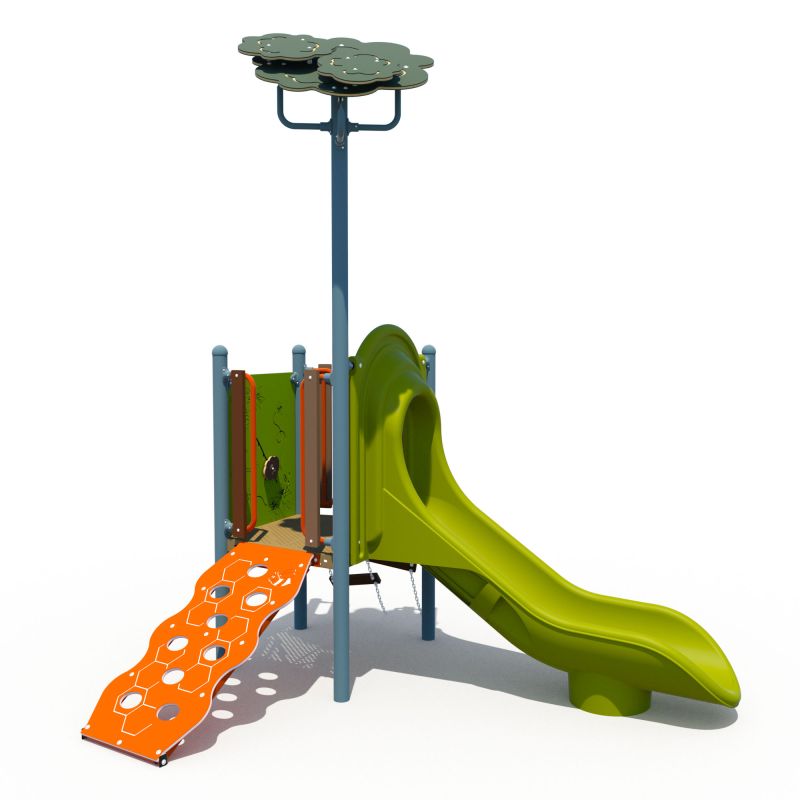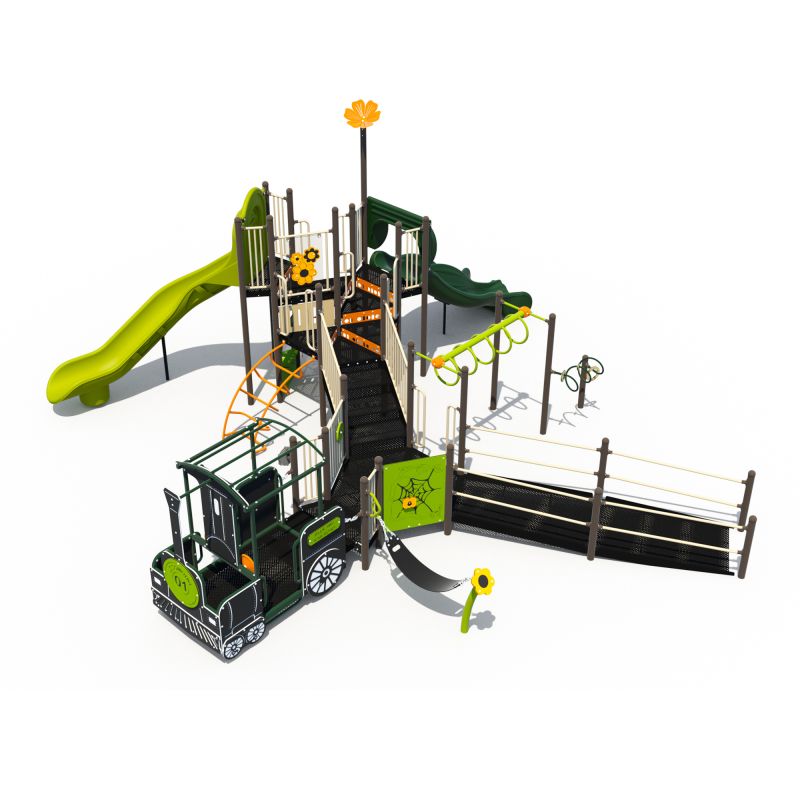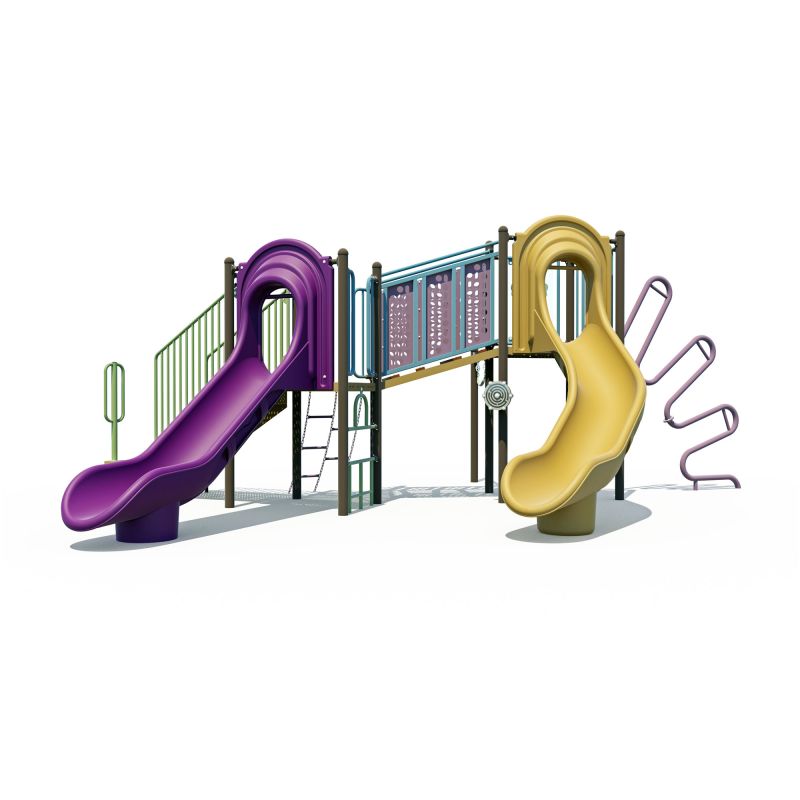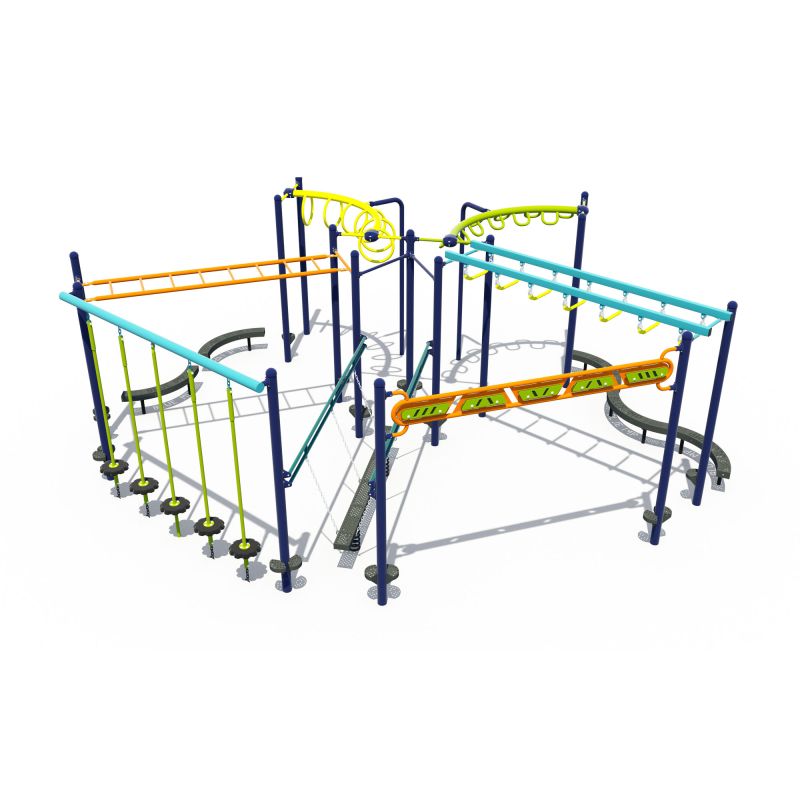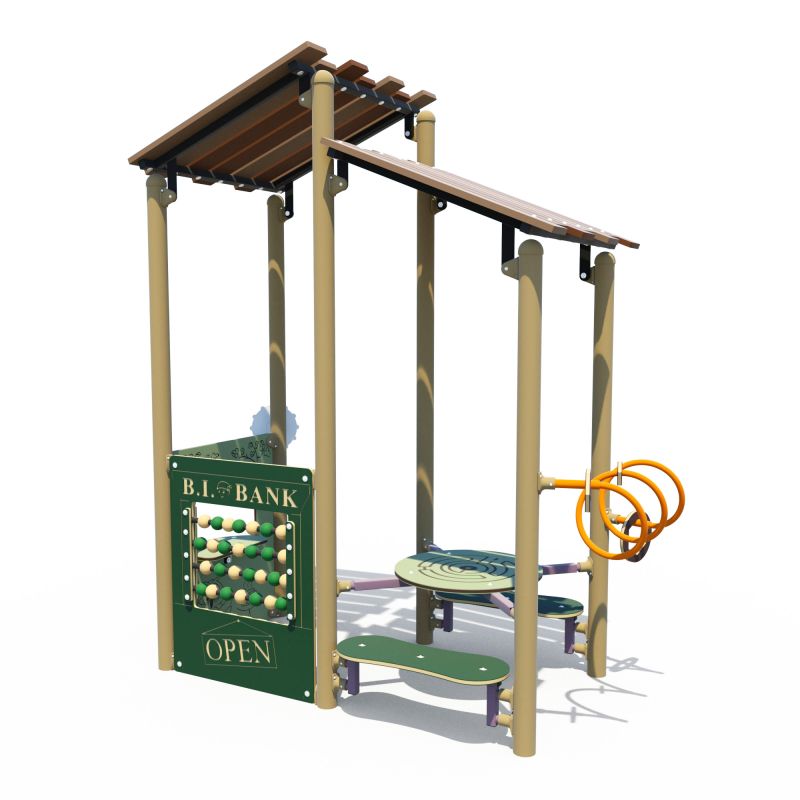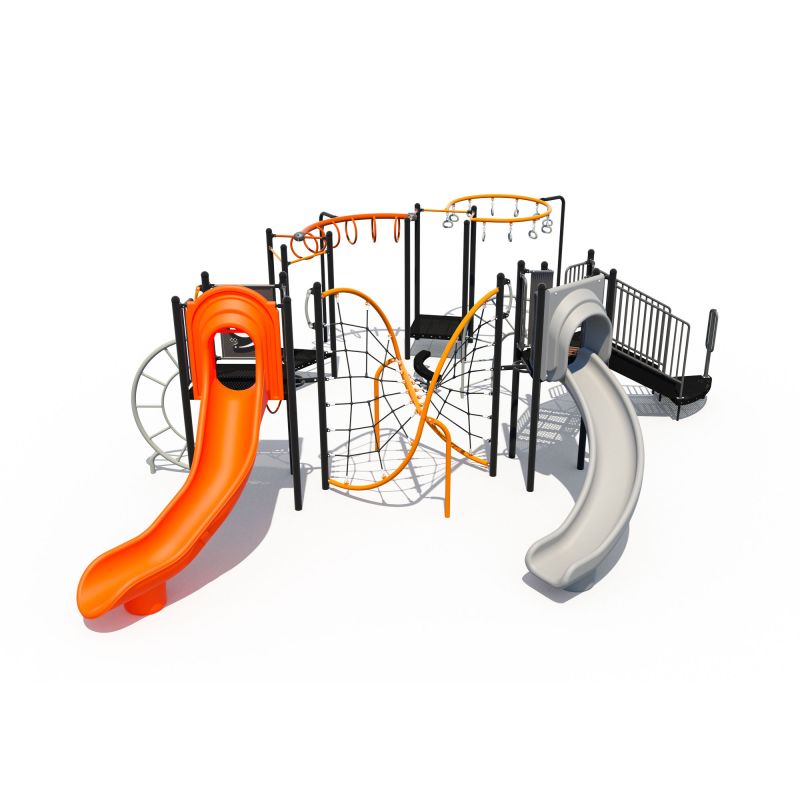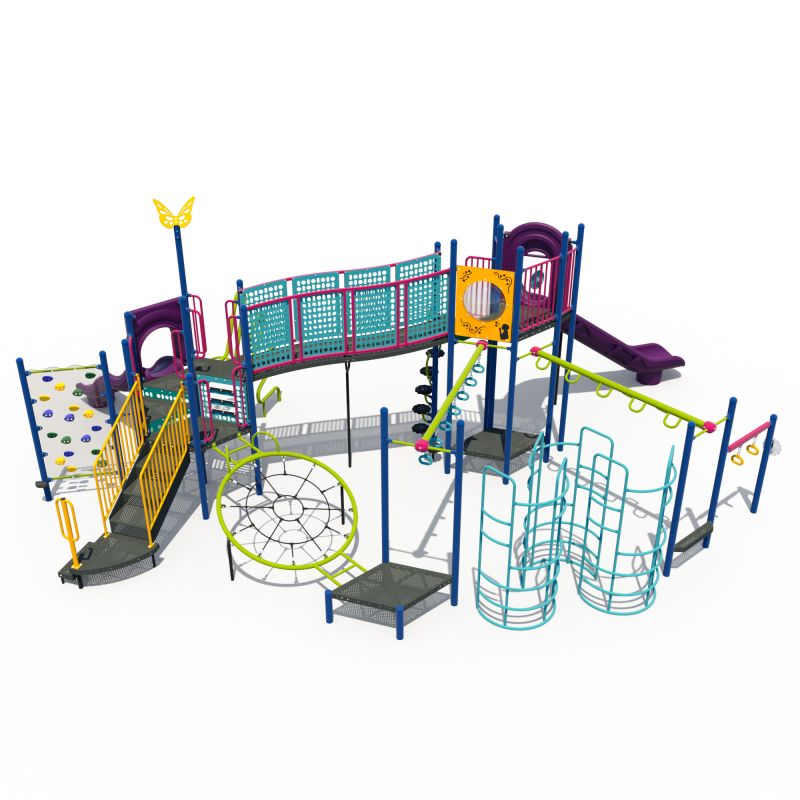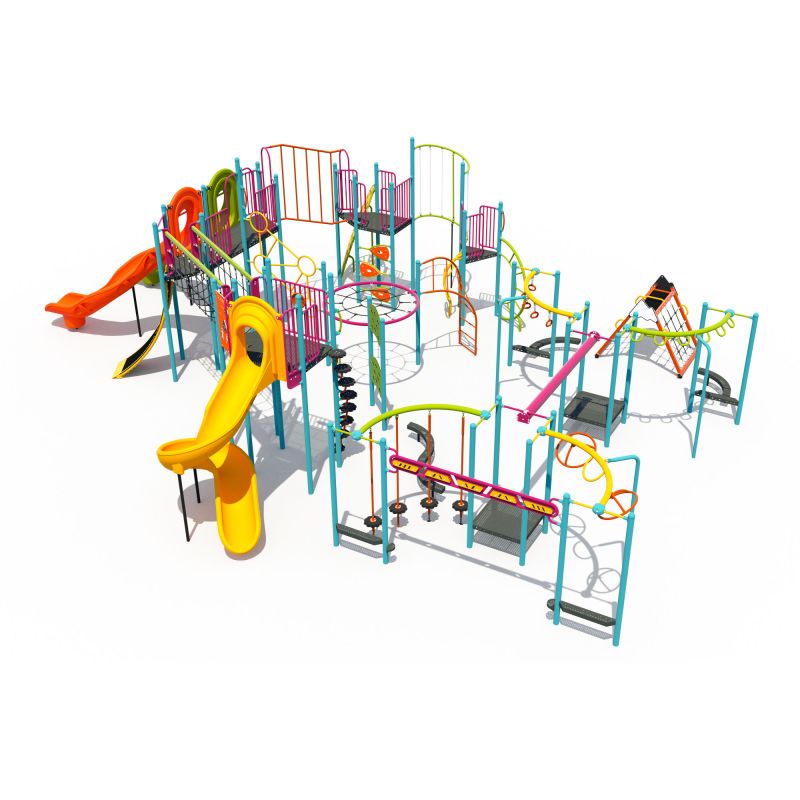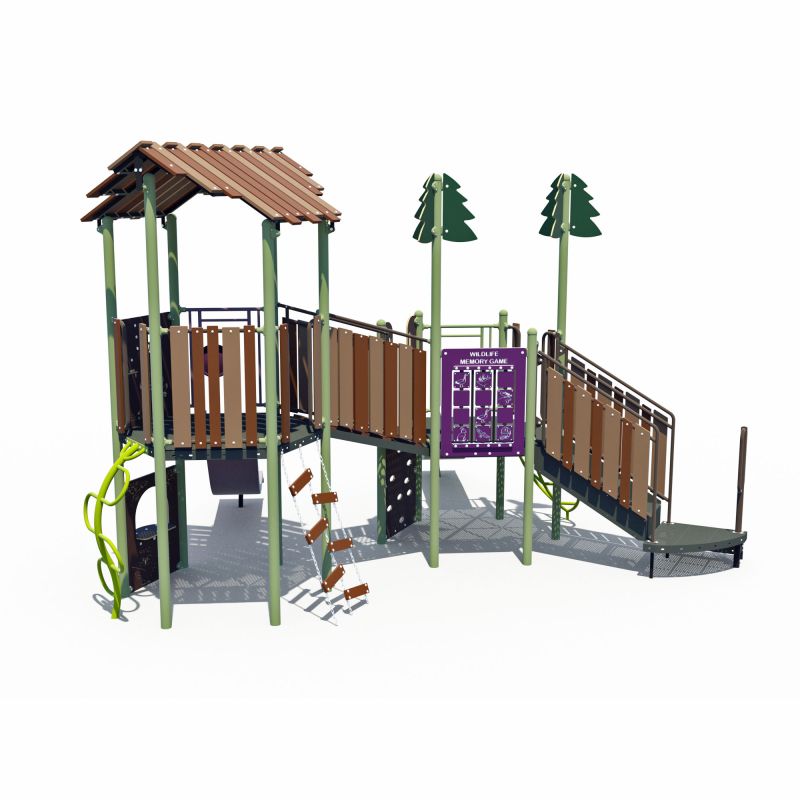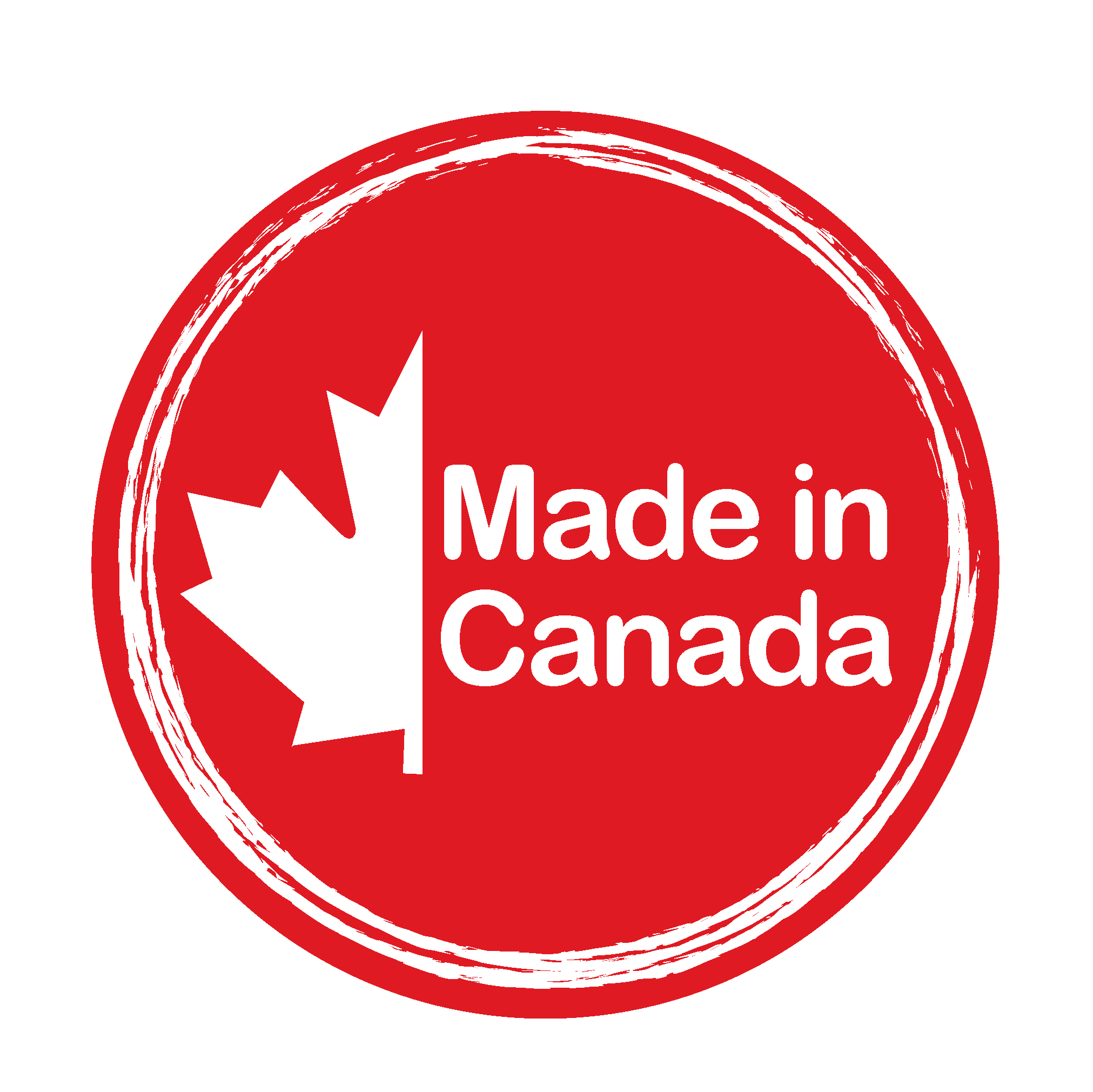- Home
- Playground Grants Funding
Kickstart your project with playground grants and funding!
Playground Grants Canada
Building a new playground is an exciting project, but securing the budget can be challenging. Fortunately, there are many playground grants and fundraising options available to help schools, community groups, and nonprofits make their dream play space a reality. This comprehensive guide will walk you through strategies to fund your playground, from identifying grant opportunities to launching effective fundraising campaigns. We’ve also compiled updated information on major playground grant programs across Canada (national and provincial) and included tips to boost your success in obtaining funding.
Before diving into specific grants, it’s important to develop a smart funding strategy. Most successful playground projects use a combination of grants and community fundraising. Here are some key steps to kickstart your plan:
- Define Your Project and Goals: Outline what your playground will include (e.g. inclusive equipment, surfacing, landscaping) and estimate the total budget. Having a clear vision and cost breakdown will help in grant applications and donor appeals.
- Research Grant Opportunities: Look for grants that align with your project’s goals, location, and beneficiary group. Pay close attention to each grant’s eligibility criteria, deadlines, and application requirements. Many playground grants focus on community development, active living, or accessibility – make sure your project matches their priorities.
- Build Partnerships and Community Support: Engage local stakeholders early. Demonstrating strong community support, such as letters from parents, schools, or the municipality, can strengthen your grant proposals. Partnerships with local businesses or service clubs can also provide matching funds or in-kind contributions (like donated labor or materials).
- Craft a Compelling Proposal: For each grant, you’ll need a tailored application. Clearly describe the project’s objectives, community impact, timeline, and budget. Emphasize outcomes like increased physical activity, social inclusion, and any unique features (e.g. accessible design). Showing how the playground will benefit children and the broader community can make your proposal stand out.
- Plan Fundraising to Complement Grants: Grants rarely cover 100% of costs. Plan local fundraising efforts to raise the remaining funds or to serve as a contingency. This dual approach also shows grant reviewers that your community is invested in the project’s success.
By thoughtfully combining playground grants and fundraising from the start, you can reach your funding goal faster and with greater confidence. Next, we’ll explore the major grant programs and funding sources available to Canadian communities for playground projects.
Numerous organizations and government programs across Canada offer grants or donations to support community playgrounds and recreation projects. Below are some of the most significant Canada-wide playground funding opportunities to consider:
- Canada Post Community Foundation Grants: The Canada Post Community Foundation offers annual grants to schools, charities and community organizations for initiatives that benefit children and youth. Many communities have received funding for playgrounds and park improvements through this program. Typical grants range from a few thousand dollars up to larger amounts (in some years a Signature Grant of ~$50,000-$100,000 is awarded to an exceptional project). Applications are usually accepted each spring for projects that promote community connection and child development.
- Enabling Accessibility Fund (EAF): This Government of Canada program provides funding for capital projects that improve accessibility in community spaces. If your playground project includes accessible features (e.g. ramps, inclusive playground equipment, accessible surfacing), it may qualify for the EAF. The fund has multiple streams; for community projects, grants are often available up to $100,000 for small projects (with larger funding for youth-driven projects or mid-sized projects). EAF applications typically open annually, and eligible applicants include municipalities, non-profits and schools. Securing an EAF grant can significantly offset the cost of making your playground inclusive for children with disabilities.
- Farm Credit Canada (FCC) AgriSpirit Fund: FCC’s AgriSpirit Fund focuses on enhancing rural communities (towns under 150,000 population). It offers capital project grants of $5,000 to $25,000 for community improvements. Playgrounds, given their role in community wellness, have been funded through AgriSpirit in the past. The fund runs an annual application window (usually opening in spring); for example, the 2024 fund accepted applications until May 15. If your playground will serve a rural or small-town area, this is a key opportunity to pursue.
- Co-op Community Spaces Program: Federated Co-operatives Limited (FCL) funds community projects in Western Canada (British Columbia, Alberta, Saskatchewan, Manitoba) through the Co-op Community Spaces program. This grant supports capital projects in recreation, environmental conservation, and urban agriculture. Non-profits, charities, or community co-operatives can apply for $25,000 to $150,000 in funding for projects like playgrounds, parks and green spaces. Applications typically open in winter (e.g. February 1 to March 1) for that year’s funding. In 2024, the program provided $1 million to 14 projects across Western Canada, including several playground and park initiatives. This is a competitive but high-impact grant for communities in areas served by local co-ops.
- Kal’s RePlay Fund: KalTire, a Canadian supplier of tire products, offers the RePlay Fund to support community infrastructure projects that use recycled rubber. This is especially relevant for playgrounds, since installing rubber safety surfacing or pour-in-place rubber paths can qualify. The Replay Fund is open to non-profits, First Nations, schools and municipalities Canada-wide. Grants typically range between $18,000 and $20,000 for larger projects like playground surfacing, though there’s no fixed award amount (it depends on applications received). The 2025 RePlay Fund intake is open until February 28, 2025. By using recycled tire products, your project not only improves accessibility and safety, but also gains a chance at significant funding. (Related tip: Many provinces also have tire recycling grant programs, see provincial sections below for BC, AB, MB.)
- Kraft Heinz Project Play: A well-known annual national contest, Project Play gives communities a shot at winning major funding for recreation facilities. Each year, Canadians nominate and vote for local projects; the winner receives $250,000 and typically 3 finalists receive $25,000 each. Playgrounds are often among the contenders, for example, in one recent year a Calgary school playground was one of four finalists out of 800+ applications. Success in this contest requires a strong community voting campaign, but it can be transformative if you win. Even if you don’t take the top prize, rallying community votes raises your project’s profile, which can help in other fundraising efforts.
- Sandbox Mutual Insurance Communities At Play: This grant was created by Sandbox Mutual Insurance in 2023 as a way to give back to deserving communities across Alberta, Saskatchewan, and Manitoba to make play structures more safe, educational, and inclusive for all kids. Each year, five groups will receive $25,000 in funding for a brand-new or renovated playground. If you’re in the middle of or just starting a playground project in one of the three provinces Sandbox operates in, Communities At Play is for you! Beginning in the early spring each year, playground project organizers have the opportunity to submit an application requesting a $25,000 donation from Sandbox for building their play structure. Playground projects that will be completed in the same calendar year as the grant application and are located in Alberta, Manitoba, or Saskatchewan are eligible to apply.
- TD Friends of the Environment Foundation (TD FEF): This foundation (supported by TD Bank) funds a wide range of environmental and “green” community projects. Grants (typically up to $10,000–$25,000) are available for initiatives such as schoolyard greening, park revitalizations, urban naturalization and environmental education. If your playground project involves planting trees, creating natural play elements, pollinator gardens, or other green features, it could qualify. Applications are usually handled through local TD FEF chapters and are reviewed for environmental impact and community engagement. A playground that doubles as a green space or outdoor classroom could attract TD’s support, adding both funding and environmental benefits.
- Community Foundations and Other Philanthropic Grants: Many areas have local community foundations or trusts that offer small grants for community improvement. For example, Community Foundations of Canada member foundations provide grants that might support playgrounds under broad themes of community wellness. One specific fund in Prince Edward Island, the R.L. Cotton Trust Fund for Public Parks, provides up to $5,000 for acquiring or developing public park space, including playgrounds. Additionally, private foundations or corporate philanthropy programs (e.g. Hydro One PowerPlay in Ontario or the Richardson Foundation in Western Canada) have historically contributed to playground builds. These opportunities may not be as widely advertised, so don’t overlook local or regional grants: check with your municipality, local businesses, service clubs (Rotary, Kiwanis, Lions), and community foundations for any funding programs that fit your project. Often, compiling several smaller grants can add up to a substantial portion of your budget.
The above list isn’t exhaustive, but it highlights many of the top funding sources that schools and communities across Canada tap into for playground projects. Next, we’ll break down provincial and regional grants, knowing what’s available in your province can further boost your fundraising efforts.
In addition to Canada-wide programs, each province has its own grants and funds that can support playground development. Below we outline key provincial playground grants and funding initiatives, organized by region:
British Columbia (B.C.) Playground Grants
- B.C. Community Gaming Grants (Capital Projects): Non-profit organizations in BC can apply for Community Gaming Grants to support capital projects, including recreation facilities and playgrounds. Through the Capital Project Grant stream, the province can fund up to 50% of project costs (to a maximum based on project size). This is a competitive program, but many parent advisory councils and community groups have received tens of thousands of dollars for playground equipment under this grant.
- Recreation Foundation of B.C.: The Recreation Foundation of BC offers grants to non-profit organizations for recreation, sports and parks projects. These tend to be smaller grants (often in the few thousands) aimed at initiatives that encourage active living. It’s worth exploring if your playground has a unique recreation or inclusion aspect that fits their funding criteria.
- Tire Stewardship BC – Community Grant Program: Tire Stewardship BC (TSBC) provides grants to communities that install BC recycled rubber products in facilities like playgrounds. This program can cover a portion of the cost of rubber safety surfacing or tiles for playgrounds. In 2024, TSBC awarded grants to eight playground projects across BC, using over 11,700 recycled tires to create safer, accessible play surfaces. Municipalities, non-profits, schools and Indigenous communities are eligible. Typically, the grant application window opens early in the year (e.g. February) and requires documentation of the project plan and quotes for the rubber material. TSBC’s support not only provides funding (often up to about $30,000), but also highlights the environmental benefit of your project.
Alberta Playground Grants
- Community Facility Enhancement Program (CFEP): Alberta’s CFEP is a major source of capital funding for community facilities. Grants are matching (50/50) and come in two levels: Small (requests up to $125,000) and Large (up to $1 million). Playground projects are eligible – for instance, a community that raises $60,000 could apply for a $60,000 matching CFEP grant to double their budget. CFEP applications are accepted year-round (with several decision cycles per year). This program has helped fund countless playgrounds in Alberta communities by covering a large chunk of costs when matched by local funds.
- Alberta Blue Cross Built Together Grants: Built Together (formerly the Healthy Community Grant Program) is Alberta Blue Cross’s community infrastructure grant. Each year, five grants of $50,000 are awarded to projects that promote active living – typically one each in Edmonton, Calgary, another city, a rural community, and an Indigenous community. Playgrounds, outdoor gyms, skate parks and trails are examples of eligible projects. Applicants must be non-profits, community groups, school councils or municipalities with a project that encourages people to be active. The application period usually closes in the fall (e.g. September). This grant is a fantastic opportunity, essentially a $50k donation with no match required, as long as your project is selected. Alberta Blue Cross has funded over 50 community play and recreation projects through Built Together since the program’s inception.
- Community Initiatives Program (CIP): Alberta’s CIP provides funding to enhance and enrich communities, focusing on projects that involve community engagement. CIP has several streams; the Project-Based stream can fund things like community events, programs, or small capital purchases (up to $75k, no match required). While CIP is not primarily for large-scale infrastructure, it could support aspects of a playground project – for example, purchasing some equipment or supporting a community-build day. It’s more commonly used for programming, but some playground committees have combined a CIP grant with other funds to reach their goal. Applications are quarterly.
- New School Playground Grant (Alberta Education): The Alberta government recognizes that new schools need playgrounds. Currently, when a brand-new elementary school is built, the province offers a one-time grant of $250,000 to help fund a new playground on site. This funding is non-matching and is intended to reduce the fundraising burden on parents when a school opens. If you’re part of a new school community, ensure you access this grant through your school board – it can cover a significant portion of a basic playground. (Note: this is only for new school builds; existing schools must use other grants/fundraising for playground replacements or upgrades.)
- Recycle Tire Grants (Alberta): In addition to Kal Tire’s national program, Alberta has its own tire recycling grant. The Alberta Recycling Management Authority offers a Tire Recycling Grant that provides funding (often up to $30,000) to municipalities, Indigenous communities and nonprofits for projects using recycled tire products. Many Alberta playgrounds have benefitted by applying for this grant to install pour-in-place rubber or rubber tiles. Check Alberta Recycling’s website for annual grant intake details (typically applications due in spring).
Saskatchewan Playground Grants
- Community Initiatives Fund (CIF): Saskatchewan’s CIF offers grants that strengthen communities, primarily through programs that engage children and youth, volunteerism, or active living. While most CIF grants target programming (e.g. after-school activities), the CIF has occasionally supported small capital components for play spaces, especially where they improve youth physical activity. Additionally, Saskatchewan non-profits can watch for the Community Places and Spaces program (which has operated under CIF in the past to fund recreation infrastructure in small communities). Check CIF’s current funding streams to see if any apply to playground facilities – these grants usually max out in the tens of thousands and may require matching or community contributions.
- Affinity Credit Union Community Funding: Affinity Credit Union, which serves much of Saskatchewan, provides community development funding through its district councils. Non-profits can apply for grants or sponsorships for local projects that improve quality of life. For example, an Affinity district community grant might contribute a few thousand dollars to a playground, especially in areas where Affinity has branches. In 2024, Affinity Credit Union invested over $2 million in 730 local organizations and initiatives across SK, including many community recreation projects. If your playground is in Saskatchewan, don’t overlook local credit unions (Affinity or others) as potential supporters through their community investment programs.
- Cameco Community Investment: Cameco, the mining company, is active in Saskatchewan communities (especially in the north and around Saskatoon). They offer community investment funding focusing on youth, education and community wellness. A playground project, particularly one in a region near Cameco’s operations or benefitting Indigenous and northern communities, could be a good candidate for Cameco’s support. Their grants can range widely in size; you would typically submit a proposal directly to Cameco’s community investment office, emphasizing the positive impact on youth and community health.
- SaskEnergy Sponsorship Program: SaskEnergy (the provincial natural gas utility) provides sponsorships and donations to non-profit and charitable organizations for community betterment. Their sponsorship priorities include community recreation, active living, and education. While SaskEnergy’s contributions might be smaller (e.g. $1,000–$5,000 or in-kind support), they can still boost a playground campaign. For instance, SaskEnergy has been known to sponsor “Playground Build Day” T-shirts or volunteer support, and they have a community grants program that has helped with park improvements. Applications can be made through SaskEnergy’s online sponsorship portal, and they are reviewed ongoing throughout the year.
- School Playground Equipment Grant (New in 2025): The Saskatchewan government has announced a brand-new School Playground Equipment Grant program, starting fall 2025. The province will invest $3.75 million annually into this program, which will provide matched funding up to $50,000 per school for building new playgrounds or upgrading older equipment. This grant will be administered in partnership with the Saskatchewan Parks and Recreation Association (SPRA) and is expected to support about 75 projects each year. The funding formula is 50/50 (so, for example, a school that raises $50,000 could receive an additional $50,000). Importantly, it’s aimed at parent groups and school councils working to improve play spaces for kids. If you’re in Saskatchewan and planning a school playground, mark this on your calendar – applications will likely open in fall 2025. It’s a huge step that acknowledges the hard work of volunteers and will make it easier and faster to get school playgrounds built.
- (Additional note: Saskatchewan also benefits from Western Canada grants like Co-op Community Spaces mentioned in the national section, and local service clubs. Furthermore, Sask Lotteries proceeds fund many community recreation initiatives via the SPRA and local recreation boards – sometimes grants for playgrounds may flow through those channels, so check with your municipal recreation director or SPRA for any regional programs.)
Manitoba Playground Grants
- Manitoba Grants Online: Manitoba maintains a central online portal for provincial grants called Manitoba Grants Online. This is not a grant itself, but a searchable database of funding programs. You can filter by category (e.g. Community Development, Sport and Recreation) to find current opportunities. Through this portal, look for programs under departments like Municipal Relations or Sport, Culture and Heritage that could fund playgrounds or community facilities. For example, past Manitoba programs have included Community Places grants and Building Sustainable Communities funds. Always verify on the portal for the most up-to-date programs and deadlines.
- Manitoba Liquor & Lotteries Community Support: The provincial Crown corporation for liquor and gaming returns some profits to the community via grants and sponsorships. Manitoba Liquor & Lotteries (MBLL) has a Community Support program that nonprofits can apply to for capital projects or events. They often support projects that promote active, healthy communities – a playground fits that mandate. While individual awards aren’t huge (often in the $5,000 to $20,000 range), MBLL’s contribution can be an important piece of your funding puzzle. They’ve helped fund playgrounds, skate parks, and sports fields across Manitoba. Applications are typically accepted on an ongoing basis, but review their guidelines for any intake periods or focus areas (e.g. they sometimes prioritize projects with inclusive or broad community reach).
- Tire Stewardship Manitoba – Community Demonstration Grant: Like other provinces, Manitoba through Tire Stewardship Manitoba (TSM) offers grants for projects using recycled tires. The Community Demonstration and Innovations Grant provides funding for incorporating Manitoba-made recycled tire products into public projects. Eligible projects include playground surfacing, rubber pathways, and other rubber landscaping features. TSM’s funding levels have been around $5,000 to $20,000 depending on the project scope. For example, up to $10,000 is offered for playground surfacing or rubber paving installations. This is a matching grant (usually 50/50). If your Manitoba playground plan includes a pour-in-place rubber ground cover or similar, applying to TSM can both reduce your costs and showcase an environmental achievement (diverting tires from landfills).
- Other Manitoba Opportunities: Manitobans should also consider local community foundations and corporate grants. For instance, Richardson Foundation (affiliated with Richardson Financial Group) has funded playgrounds, especially in communities where Richardson operates. Additionally, urban Indigenous organizations in Winnipeg and other areas might access the Urban Programming for Indigenous Peoples (UPIP) or similar federal/provincial funds for community space improvements. Check with Recreation Manitoba or your local municipal office for any current recreation capital funding programs (Manitoba occasionally launches targeted programs, like the Building Sustainable Communities Program, that can fund playgrounds up to a certain percentage).
Ontario Playground Grants
- Ontario Trillium Foundation (OTF) – Capital Grants: The Ontario Trillium Foundation is a major funder of community projects in Ontario. Its Capital grant stream is a great fit for playground projects. Capital grants fund infrastructure initiatives that improve community spaces, with grants typically ranging from $5,000 up to $150,000. In fact, many towns have upgraded playgrounds thanks to OTF, for example, the town of Perth, ON received a $140,000 Trillium grant to enhance a community playground. OTF capital grants require a strong case for how the project will achieve one of OTF’s outcomes (e.g. active people, connected people, green spaces, etc.), and usually some partnership or support from the municipality. The application process is rigorous, and there are specific intake windows (often once or twice a year). If your organization is a registered charity or incorporated non-profit (or an Indigenous community or municipality), and your playground will serve a broad public benefit, OTF is one of the best opportunities in Ontario. Tip: Be prepared to measure the impact (like number of children/families served) and address accessibility and community need in your application.
- FirstOntario Credit Union – Community Sponsorships: In the Golden Horseshoe region (Hamilton, Niagara, Halton, etc.), FirstOntario Credit Union provides community sponsorships and donations. They have supported local playground builds and park improvements as part of their community engagement. If your project is in an area FirstOntario serves, you can apply through their community sponsorship program. Typically, these are modest contributions (perhaps $1,000 to $5,000 or in-kind support), but every bit helps. Similarly, other credit unions and local banks in Ontario often have grant programs, e.g. TD (detailed above), RBC (through the RBC Future Launch Community Challenge or RBC Youth Action awards in some communities), and Hydro One (which had a “PowerPlay” program historically funding recreation projects). Always explore the major employers or businesses in your region for grants or sponsorships.
- Green Municipal Fund & Accessibility Fund: If your playground is part of a larger park development with an environmental component, the Federation of Canadian Municipalities (FCM) Green Municipal Fund might be a long shot source (this usually funds sustainability projects, but some innovative natural playground or climate-resilient park elements could qualify for loans or grants). Also, the Ontario government’s EnAbling Change program or federal Accessible Communities programs might support playgrounds that significantly improve accessibility. For instance, a fully accessible playground might leverage a small grant from the Ontario Accessibility Fund for features like transfer platforms or communication boards. These are supplementary opportunities, not dedicated playground grants, but related to specific aspects (green infrastructure or accessibility enhancements) in Ontario.
- Community Foundations and City Grants (Ontario): Ontario has many local community foundations that manage endowment funds for community projects, check if your town/city has one (e.g. Toronto Foundation, Ottawa Community Foundation, etc.) and whether they have a grant stream for recreation or youth projects. Additionally, some larger municipalities offer grants to community groups for capital projects: for example, the City of Ottawa has a Community Partnership Major Capital Program that can fund recreational facilities on a cost-sharing basis. Similarly, Toronto has programs for park improvements in partnership with community groups. Always inquire with your local parks and recreation department, if the playground is on city land, there may be matching funds or grants available through the municipality.
Atlantic Canada Playground Grants
Nova Scotia:
- Recreation Facility Development Grant (Nova Scotia): This is the main provincial capital grant for recreation infrastructure in NS. It assists municipalities and non-profit groups with projects that increase public participation in sport and physical recreation, which explicitly includes playgrounds and parks. The grant will fund up to 2/3 of eligible project costs, to a maximum of $150,000. Communities must cover the other 1/3 (which can be from other grants or fundraising). Applications are due annually (mid-February each year for the next fiscal cycle). This grant has been a cornerstone for building and upgrading playgrounds, especially larger community or regional playgrounds in Nova Scotia. If you apply, make sure to involve your municipal recreation director or regional rep, they often provide a required letter of support and can help navigate the process.
- Community Facilities Improvement Program (Nova Scotia): (Note: This program name can vary; sometimes it’s rolled into the above RFD grant.) Nova Scotia’s Communities, Culture, Tourism & Heritage department also offers smaller grants for community recreation enhancements. For example, a Community Recreation Capital Grant or Community Access-Ability grant might provide up to $10,000 or $20,000 for minor upgrades, accessible features, or planning studies. Always check the CCTH website for any additional grants like the “Community Recreation Development Grant” which focuses on recreation initiatives (often non-capital, but occasionally supporting materials or pilot projects).
- Early Learning and Child Care Outdoor Space Grant: Nova Scotia, as part of federal-provincial child care agreements, has offered grants to improve outdoor play spaces at licensed child care centers. If your playground project is at a childcare, preschool or early learning center, look into the Early Childhood Infrastructure Fund or specific Outdoor Play Space grants. One such grant (around 2018-2020) provided funding to childcare centers to upgrade playground equipment, natural elements, and surfacing. The availability of this funding can depend on government budgets, but it’s worth inquiring with the NS Department of Education and Early Childhood Development. These grants recognize that young children benefit immensely from safe, stimulating outdoor play, and they have helped many daycares create quality play areas.
New Brunswick:
- Inclusive Community Recreation Infrastructure Fund (ICRIF): New Brunswick offers the ICRIF through its Sport and Recreation branch. The goal is to improve inclusion and access in recreation and sport facilities. Upgrading a playground to be more accessible (e.g. adding accessible swings, surfacing, or inclusive play structures) would align well with this fund. It typically supports renovations or additions that make facilities usable by more people (especially those with disabilities). Funds are limited, but the grant could cover a portion of a playground upgrade specifically for accessibility. Check NB’s Tourism, Heritage and Culture (Sport & Rec) site for application details, as of recent years, they have issued regional grants under ICRIF.
- Active Communities Grant (NB): This program in New Brunswick supports initiatives that get people moving and enjoying physical activity. It has funded projects like community fitness programs, walking clubs, and small infrastructure that encourages activity. For example, if a community wanted to add an outdoor obstacle course or active playground markings, Active Communities might help. The grants are usually modest (a few thousand dollars) and aimed at programming or pilot projects. However, including programming in your playground project (such as a “play day program” or using the new playground for a community fitness initiative) could make you eligible. Essentially, NB’s Active Communities Grant can complement a playground build by funding the “software” (programs, launch events, training for play leaders) while other grants fund the “hardware” (equipment).
- Tourism, Heritage and Culture Funding Programs: New Brunswick’s Department of Tourism, Heritage and Culture has various grant programs that may indirectly support playground projects. For instance, they have offered Community Cultural Places grants, Heritage grants for historic parks, and Rural Community Development funds. Additionally, Regional Development Corporation (RDC) in NB sometimes provides one-time capital funding for community priorities (often through local MLAs or special initiatives). It can be worth reaching out to your local provincial representatives – playgrounds are popular projects that politicians often like to support via available funds. Also, check if your region has access to ACOA (Atlantic Canada Opportunities Agency) programs for community infrastructure (though ACOA typically does larger projects, a significant playground in a tourism-heavy area might qualify under community development).
Prince Edward Island:
- R.L. Cotton Trust Fund for Public Parks (PEI): This is a unique PEI fund created by the late philanthropist Robert Cotton. It provides small grants (up to $5,000) to communities or charities for acquiring or improving parklands. Rural beautification, park enhancements, and playground installations all fall under its mandate. Applications are usually handled through the provincial government (there’s a form on the PEI government website for the Cotton Trust Fund). This grant might not cover a lot, but it’s relatively easy to apply for and can pay for things like benches, landscaping, or a piece of play equipment to enhance a public playground.
- Live Well PEI – Wellness Grants: Live Well PEI offers Wellness Grants that support community-led initiatives promoting healthy living and wellness. There are a few streams (e.g. physical activity, mental wellness, healthy eating). A project that gets people active, like a community playground, could fit the physical activity stream. In practice, these grants have been used for things like walking trail enhancements, outdoor play programs for kids, or equipment that encourages movement. Funding amounts can vary but often are in the $1,000 to $5,000 range for small projects. If your playground committee also plans programming (family play days, outdoor games for kids, etc.), a Wellness Grant could fund those activities or small add-ons to the playground (such as portable play equipment, signage, or shade for a healthy outdoor environment).
- (Additional PEI note: Don’t forget local businesses and service clubs. PEI is tight-knit and projects often come together with support from community fundraisers, Lions Clubs, Rotary Clubs, etc. There may not be as many formal grant programs in PEI, but community generosity is strong. Also, if the playground will support early childhood or school-aged kids, consider provincial education or child development funds that might be tapped in coordination with schools/child care centers.)
Newfoundland & Labrador:
- Recreation NL Funding Opportunities: Recreation Newfoundland & Labrador (Recreation NL) is the provincial association that often administers or promotes grants for community recreation. On their website or newsletters, you’ll find information about current funding programs. For instance, they highlight the Active NL Fund (see below) and sometimes federal programs like ParticipACTION grants, etc. Recreation NL also offers scholarships and small grants for training, but for infrastructure they mainly act as a resource hub. Always check their “Funding Opportunities” page or reach out to them for advice on funding your playground – they may point you to lesser-known opportunities or even provide letters of support.
- Active NL Fund: This is a grant program by the Government of Newfoundland and Labrador designed to support active healthy living initiatives. It provides funding up to $10,000 for projects that develop, improve, or rehabilitate recreational infrastructure or programs. The scope is broad, communities can apply to build or upgrade playgrounds, purchase sports equipment, create walking trails, etc. Notably, the guidelines explicitly list playground equipment (CSA approved) as eligible for funding. Active NL often has an application deadline each year (for example, spring 2024 for the 2024-25 fund). If you are improving a community’s physical activity environment, which a playground certainly does, this fund should be on your list. It may require some cost-sharing or demonstration of community need, but $10k can go a long way, especially in smaller communities.
- Other NL funding: Newfoundland and Labrador’s government occasionally launches other funding programs, like the Community Healthy Living Fund or infrastructure grants under Municipal Affairs. Keep an eye on provincial news – for example, any special funding for rural development or community wellness that could include playgrounds. Also, corporate donors like Newfoundland and Labrador Hydro or Nalcor Energy have community investment programs that might support projects in areas they operate. And similar to other provinces, local Lions/Rotary clubs in NL are very active in fundraising for playgrounds (many small towns have “Lion’s Park” playgrounds funded by these clubs).
Northwest Territories:
- Early Childhood Infrastructure Fund: The NWT government’s Early Childhood Infrastructure Fund (ECIF) is geared toward preserving or expanding child care infrastructure. This includes creating new child care spaces or improving facilities for young children. If your playground project is associated with a daycare, Head Start, or early childhood program in NWT, the ECIF could potentially help fund things like playground equipment or safety improvements. NWT has been expanding child care spaces under federal agreements, and part of that involves suitable outdoor play areas. Proposals for ECIF are accepted periodically, and applicants (often child care operators or community organizations) should highlight how the project will improve quality and accessibility of early childhood services.
Yukon :
- Community Development Fund (CDF): The Yukon Government’s Community Development Fund is a robust source of funding for community projects. It has three tiers: Tier 1 (up to $20,000), Tier 2 (up to $75,000), and Tier 3 (up to $750,000) – each with its own application deadline cycle. Non-profits and local governments can apply. Playgrounds and park projects are commonly funded through the CDF. For example, a small community playground might get a Tier 1 grant to purchase equipment, while a larger project (say a new playground as part of a community park redevelopment) could secure a Tier 2 grant. The CDF looks for social, cultural and economic benefits to the community – a well-thought-out playground that will serve as a community hub for families definitely fits. Be sure to plan ahead for the deadlines (Tier 1 deadlines occur 4 times a year; Tier 2 and 3 are less frequent). The CDF is highly valued in Yukon: over the years it has invested millions into community infrastructure across the territory.
Nunavut:
- Communities in Nunavut can pursue funding through federal programs (like CanNor – Canadian Northern Economic Development Agency, which sometimes funds community infrastructure in the North). Additionally, Nunavut’s territorial government has programs under its Community and Government Services department for community halls, and possibly minor capital for recreation through municipal funding. If you’re in Nunavut, it’s recommended to coordinate with your local hamlet council and look at GN initiatives such as the Community Recreation Development Program (if one exists) or partnerships with organizations like the Nunavut Literacy Council or Brighter Futures (some communities have used such funds for playgrounds as part of child development goals). Also, like elsewhere, local fundraising and corporate sponsorship (e.g. airlines, Northern stores) can play a big role due to limited grant programs.
As we’ve seen, every region has avenues to help fund play spaces. Many successful projects layer multiple sources – for instance, a school might combine a provincial grant, a corporate donation, a community foundation grant, and lots of local fundraising to reach the total amount. Next, we’ll shift focus to the fundraising side of the equation, which is the other key to making your playground happen.
Applying for grants to build a playground or support a community project requires careful planning, clear communication, and attention to detail. Below is a actionable checklist of key tips to help schools, nonprofits, and community groups prepare successful grant proposals that align with funder goals and demonstrate strong community impact.
Before You Begin
- Align with Funder Goals and Eligibility: Research each potential grant maker’s mission, priorities, and criteria, and only pursue grants that fit your project. Tailor every application to highlight how your project advances the funder’s goals. Choose funders that are currently accepting applications and whose geographic or focus matches your project; applying to multiple suitable grants can improve your odds of success.
- Gather Key Information and Documents: Assemble all essential data and paperwork before you start writing. This includes evidence of community needs (demographics, statistics), details of your project plan, your organization’s information, lists of key team/board members, and any required approvals (e.g. school or district permission). Having these facts and documents ready will streamline the application process and ensure nothing important is missing.
- Start Early and Plan for Deadlines: Begin the grant writing process well ahead of the due date, rushing at the last minute can lead to mistakes or missing documents. Create a timeline for drafting, revising, and gathering letters or attachments so you can submit a complete proposal on time (aim for early submission to buffer against any last-minute issues). Grant applications that are prepared and submitted early tend to be more polished and meet all requirements.
Developing a Strong Proposal
- Craft a Compelling Story: Tell a clear and engaging story about your project’s purpose and impact on the community. In your proposal, describe the problem or need your playground/community project addresses and explain your solution in human terms, who will benefit, how they will benefit, and why it matters. Use a confident and passionate tone that shows you understand the community context. For example, incorporate brief anecdotes or visions of children playing on the new playground to make the proposal memorable (while staying factual). Support your narrative with evidence: include relevant statistics or data to strengthen your case for why the project is needed and how it will make a difference.
- Define Clear Goals and Measurable Outcomes: Break your project down into specific objectives, activities, and expected outcomes so funders know exactly what you plan to accomplish. Clearly state what success looks like, for example, the number of students or residents who will benefit, and how you will measure or evaluate the results.
Tip: Grant reviewers appreciate concrete targets and evaluation plans, even for community-based projects, because it shows accountability. Detailing your goals and metrics will make your proposal more credible and focused. - Prepare a Detailed, Realistic Budget: Plan out a cost-effective budget that aligns with your project narrative and goals. List all expected expenses for the project (equipment, materials, labor, program costs, etc.) and double-check that the numbers make sense with your described activities. Funders look for realistic estimates and wise use of funds, be transparent about costs and include every relevant item (don’t forget things like installation, maintenance, or personnel costs with taxes/benefits if applicable). Include any in-kind contributions, volunteer labor, or matching funds your group will provide, as this demonstrates commitment and value for money. Show exactly how grant dollars will be spent; providing a detailed breakdown (even attaching price quotes or designs) can help build the funder’s confidence that their money will be used responsibly.
- Demonstrate Community Support: Show that your community is actively behind the project. Grantors are more likely to fund projects that have local buy-in and respond to a real community need. In your application, describe any community engagement efforts – for example, mention public meetings, surveys, or PTA support that shaped the project. Identify partners or supporters (such as the school PTA, local businesses, or city officials) and include letters of support or testimonials if allowed. Emphasize volunteer involvement and any resources the community is contributing (labor, materials, fundraising), which illustrates shared commitment. This all helps convince funders that your project is relevant and that it matters to the people who will benefit from it.
- Plan for Sustainability and Long-Term Impact: Explain what will happen after the grant funds are spent. Funders often ask about sustainability, they want to know their investment will have lasting effects. Outline how you will maintain the playground or continue the program in the future (e.g. through a maintenance plan, future fundraising, or support from the school/community). If the project is a one-time event or build, describe how its benefits will endure or how it sets the stage for future community improvements. Showing a clear plan for long-term success or upkeep reassures funders that the project won’t fade away once the grant money is used.
Final Checks
- Follow All Application Guidelines: Carefully read and adhere to the funder’s instructions for the application format and required materials. Use the proper application form or online portal if provided, and address every question or section in the order given. Respect any word/page limits and formatting rules, for example, if the guidance calls for a 500-word narrative or specific font size, stick to it strictly (submitting 520 words when 500 is asked for can hurt your chances). Double-check that you have included all requested attachments or supplemental documents (such as your nonprofit registration letter, project plans, budgets, or support letters). The quickest way to be rejected is to miss a required step or document, so use a checklist to ensure your proposal package is 100% complete and compliant before submitting.
- Proofread and Polish the Proposal: Set aside time to review your entire application carefully for clarity and errors. A well-written, error-free proposal reflects professionalism. Check for spelling and grammatical mistakes and fix any awkward phrasing. It’s often helpful to have someone else read through your draft as well, a fresh set of eyes can catch mistakes or unclear sections you might overlook. Ensure that your budget tables add up correctly and all numbers referenced in the text match the budget sheets. Use clear, plain language that anyone could understand, avoid jargon or technical terms that might confuse reviewers. A concise and readable application is more likely to impress grant reviewers, so tighten up any overly long or repetitive sections during your final edit.
- Avoid Common Mistakes: Steer clear of pitfalls that frequently undermine grant applications. Never submit a generic proposal copied to multiple funders – proposals that feel boilerplate or “overly polished but impersonal” can turn off reviewers. Instead, use your own voice and tailor each proposal to the specific funder and community context (funders can tell when an application lacks genuine specificity). Don’t stray from your organization’s mission or capacity in an attempt to fit a grant opportunity, proposing activities that you’re not prepared to execute can raise red flags about feasibility. Likewise, avoid unrealistic promises; be truthful about what you can achieve with the grant. Finally, don’t procrastinate or ignore details, starting late or skipping the application guidelines can lead to preventable errors that sink your proposal. By being mindful of these common mistakes and addressing them proactively, you’ll greatly improve your chances of writing a winning grant application.
Turning Your Playground Dream into Reality
Embarking on a playground project can feel daunting, especially when faced with a hefty price tag. Don’t hesitate to reach out for support. Our team at Blue Imp has decades of experience working with communities on playground projects, we can share ideas, provide budgetary quotes, and even help identify relevant grants in your region. In fact, we invite you to contact your local Blue Imp representative for a detailed list of playground funding opportunities specific to your area. We’re here to help guide you through the process, from planning and grant-writing to the final installation.
Grants and fundraising efforts are truly worth it. By leveraging available funding and the power of community spirit, you’ll soon be watching kids swing, slide, and climb on a new play structure that stands as a testament to what collaboration can achieve. Securing the dollars is just one part of creating a vibrant, healthy, and inclusive play space, and with the resources and tips provided here, you’re well on your way to kickstarting your project with playground grants and fundraising success.
Good luck, and we can’t wait to see your new playground come to life!
